Exploring Rome for the first time is an unforgettable experience. No other city in Europe retains such a deep connection to history and the past which literally radiates from the weathered cobblestoned streets and ancient facades. I created my travel guide and itinerary documenting my journey to Rome. I’ve included travel tips, my favorite places I discovered, and inspiration for your trip to the Eternal City. I hope you come to enjoy and admire Rome as much as I did.
~ “Rome is the city of echoes, the city of illusions, and the city of yearning .” -Giotto di Bondone
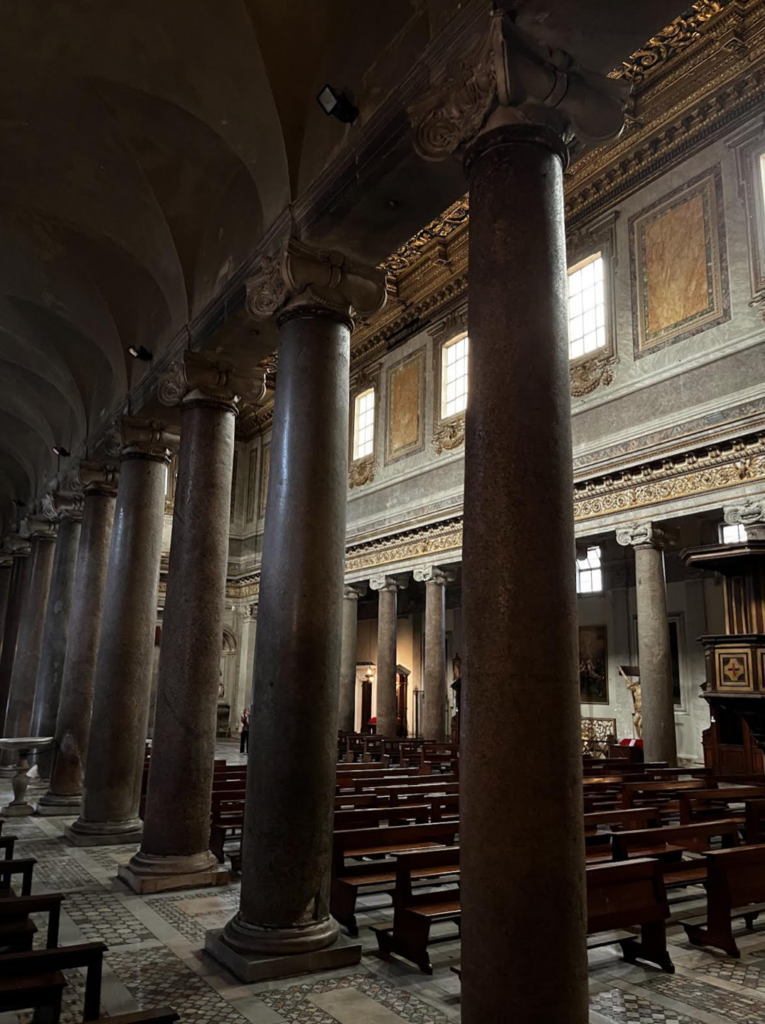
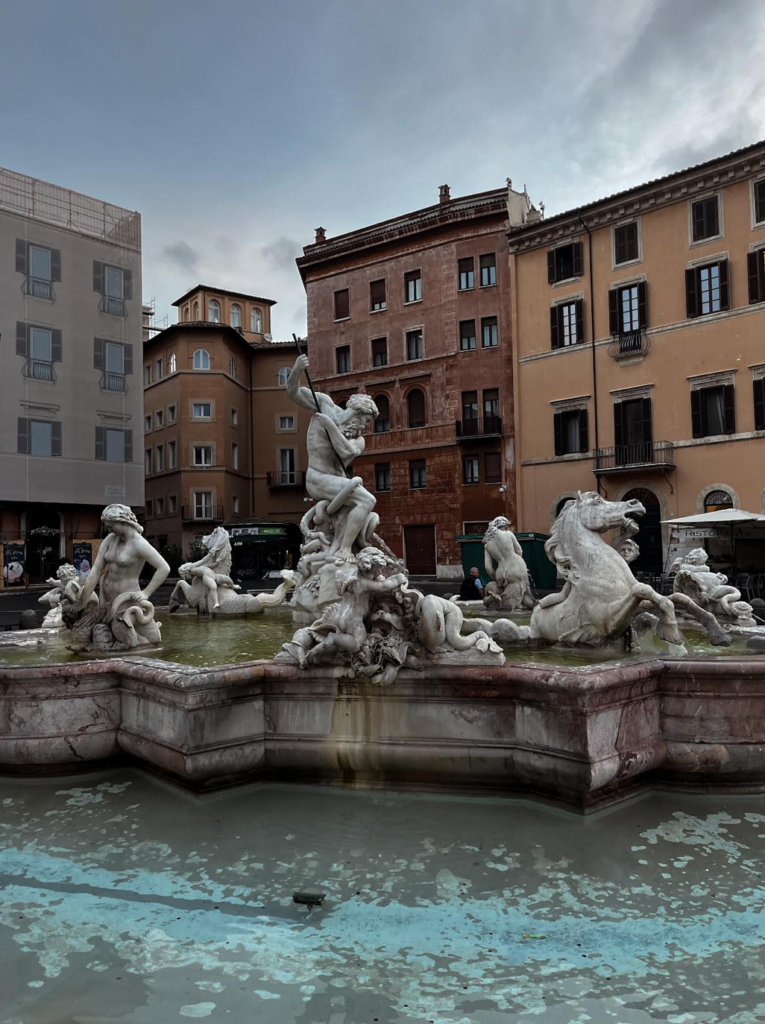
At the heart of the boot-shaped Italian peninsula is a city at the center of world-shaping events and stories of mythical proportions. Rome is a place that plays with the traveler’s imagination and inspires a sense of wonder and creativity that can only be found here. Complex layers of history overlap as the city grappled with destruction, rebirth, and renaissance. Ancient ruins and rubble exist among the watchful eyes of marble saints on stoic baroque facades. Rome is the embodiment of aesthetic, what it means to create beauty that surrounds everyday experiences. This includes the places the Romans live, shop, worship, and enjoy life. If the concept wasn’t born in Rome, it was certainly perfected here. Truly, there is no experience quite like exploring Rome.
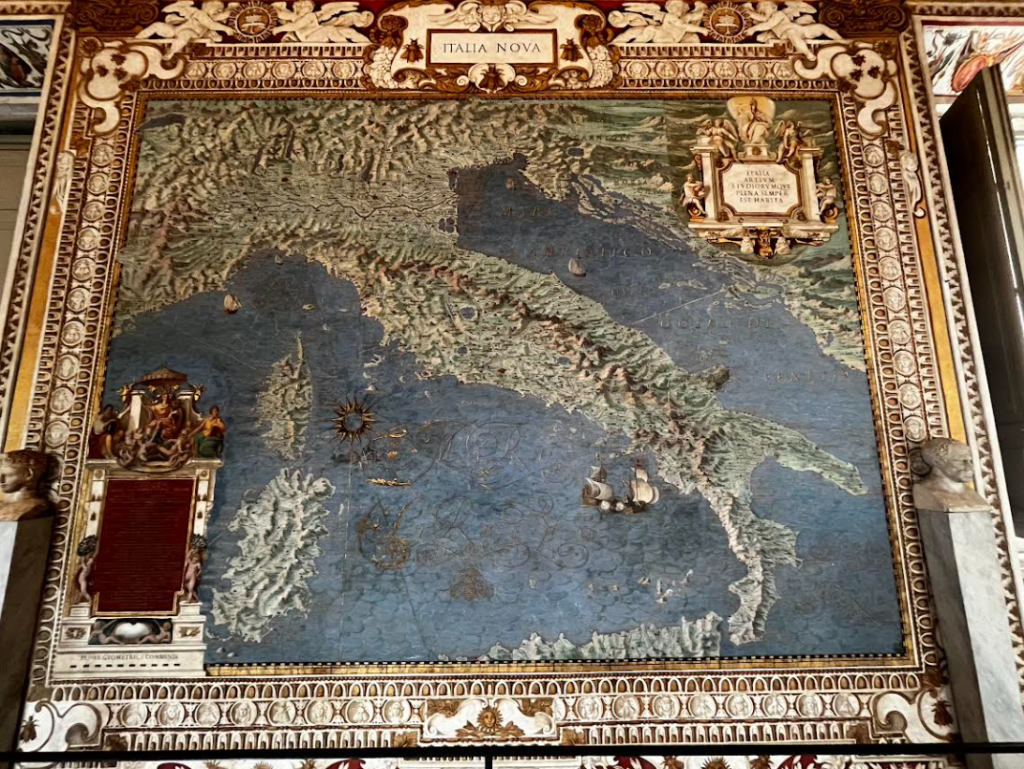
Eternal Significance
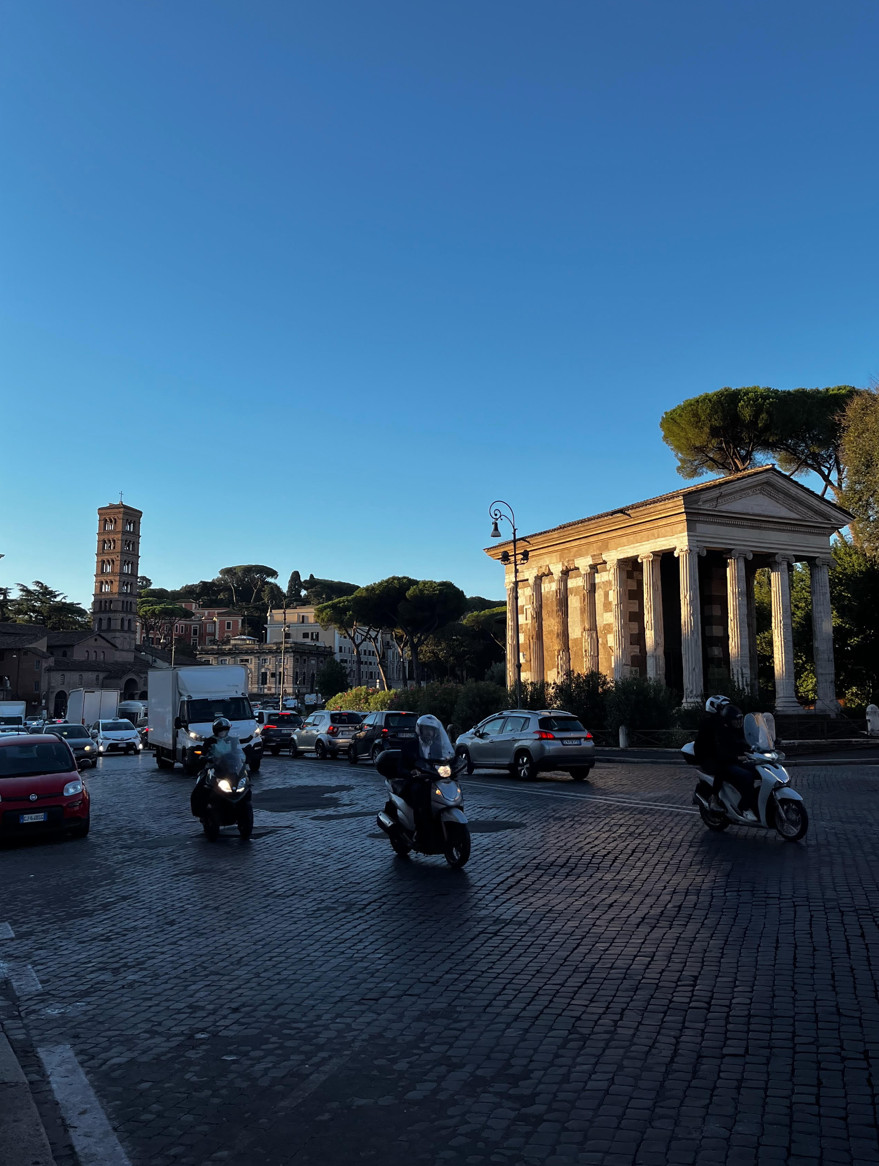
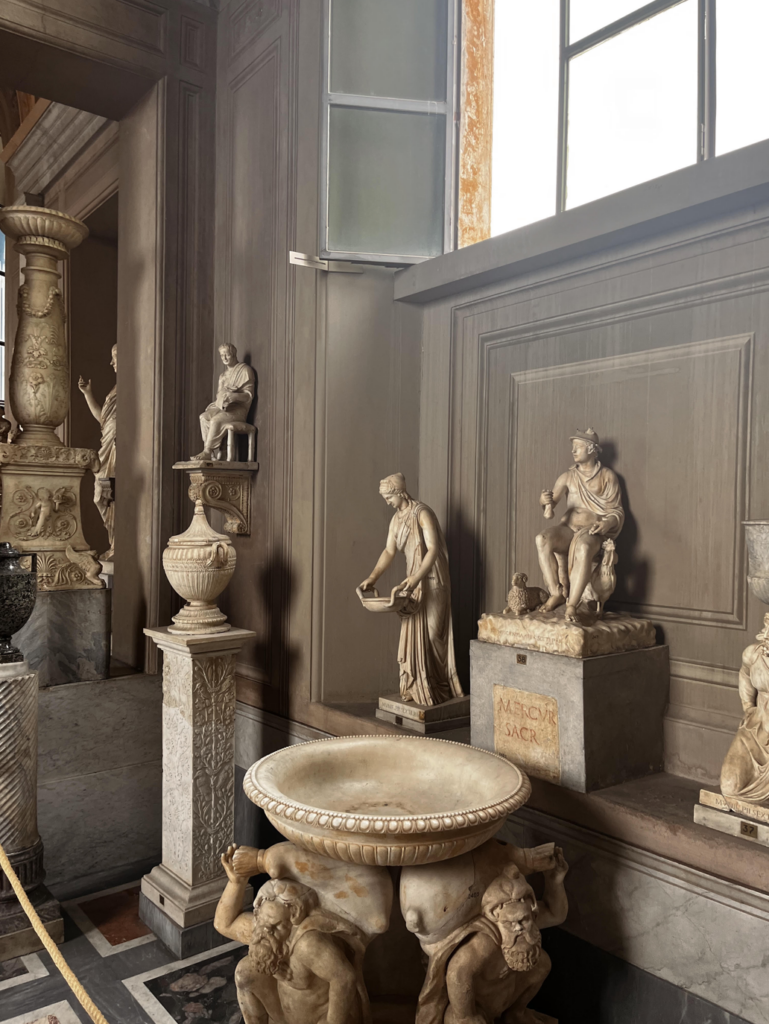
Rome has always been a meeting point and intersection between different worlds. It was the capital of the legendary Roman Empire that dominated the Mediterranean Sea for over a thousand years. Its cultural contributions have shaped the future of Western Europe and beyond. It’s the headquarters of the largest denomination in Christianity, the Roman Catholic church, which is the largest commissioner of art in the world.
It’s also the modern-day capital of Italy and serves as the beating heart of the Italian national identity. Moreover, with Italy still experiencing economic, social, and cultural divides between the North and South, Rome stands at the center of the country, serving as a uniting force for a nation that has been unified for just over a hundred years.
Although Rome is not competing as the worlds largest city in terms of population, it certainly makes up for in historical and cultural significance.

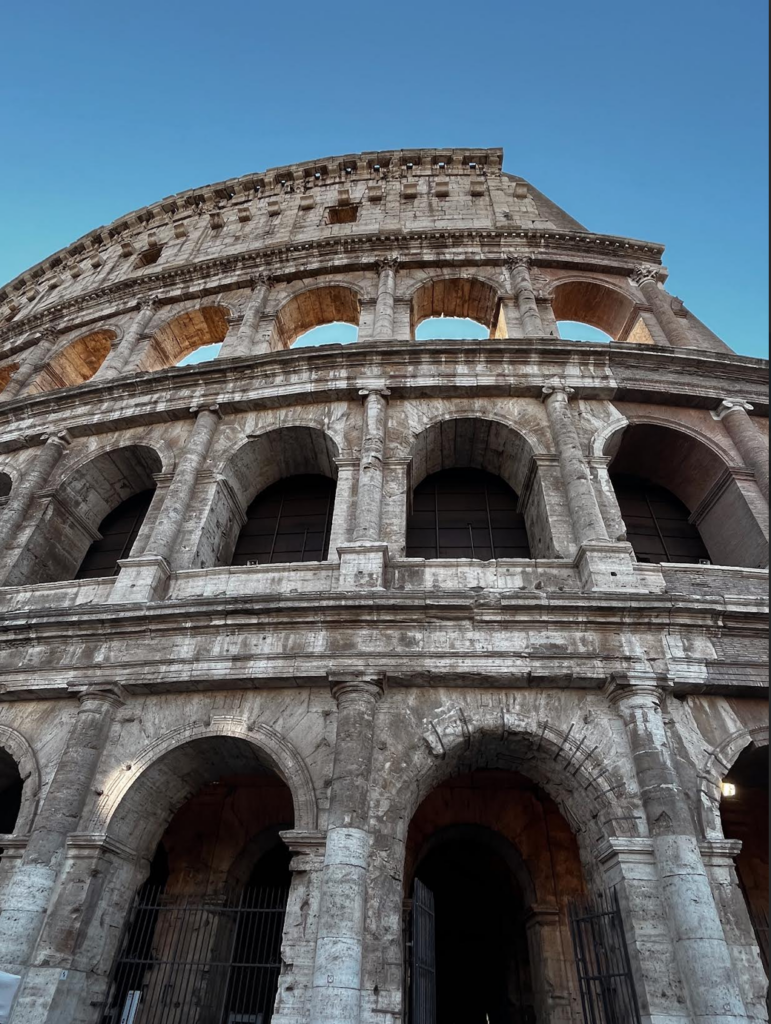
Exploring Rome: Guide, Itinerary, and Travel Inspiration
Despite the Eternal City’s global popularity, Rome is still one of the most exciting and inspiring places to explore in Europe. I have compiled the most important tips for visiting the eternal city along with my favorite places in Rome.
This blog serves as a comprehensive resource to help you plan your trip to the Eternal City. I have also included my full four day itinerary to help you make navigating the city and it’s endless monuments easier. Feel free to alter my travel plans for a longer or shorter stay. Additionally, I have also included a Google Maps of all the locations in my blog.
Rome City Highlights
- Location: Capital of Italy
- Region: Lazio, Central Italy
- Language: Italian, English widely spoken
- Currency: Euro
- Population: 2.8 million residents
- Age: 2,777 years old
- Climate: Mediterranean- Dry summers, wet winters
- Best to Visit: April-June; Late September- October
- Religion: Headquarters of the Roman Catholic Church

Exploring Rome – Where to Start
Rome can be a daunting place to travel to. There truly is so much to see in the city. One could spend a lifetime here and not see every painting, statue, fresco, or ancient ruin.
Leave Time to Wander
My top tip for new travelers to the Eternal City is to plan your daily priorities, but leave time to explore.
Rome is the type of place where you can easily develop fear of missing out. Know your daily highlights so you can organize your itinerary but leave time to wander. It’s in those moments finding the hidden corners of the city that will make you fall in love with Rome. Allow yourself to get lost.
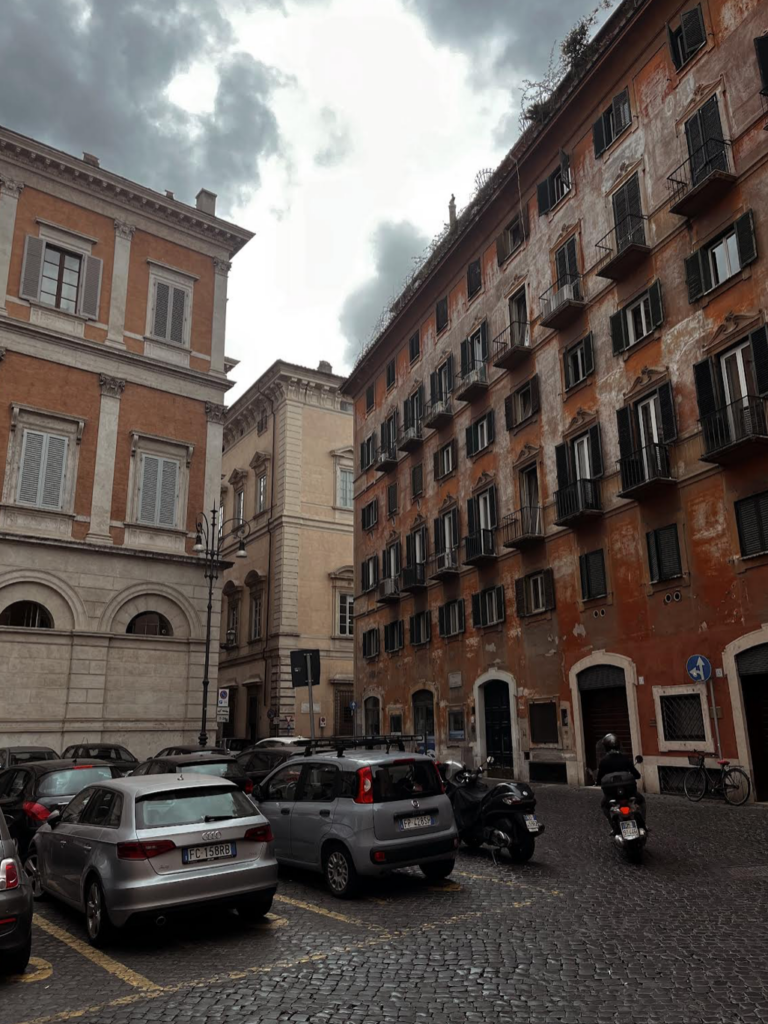
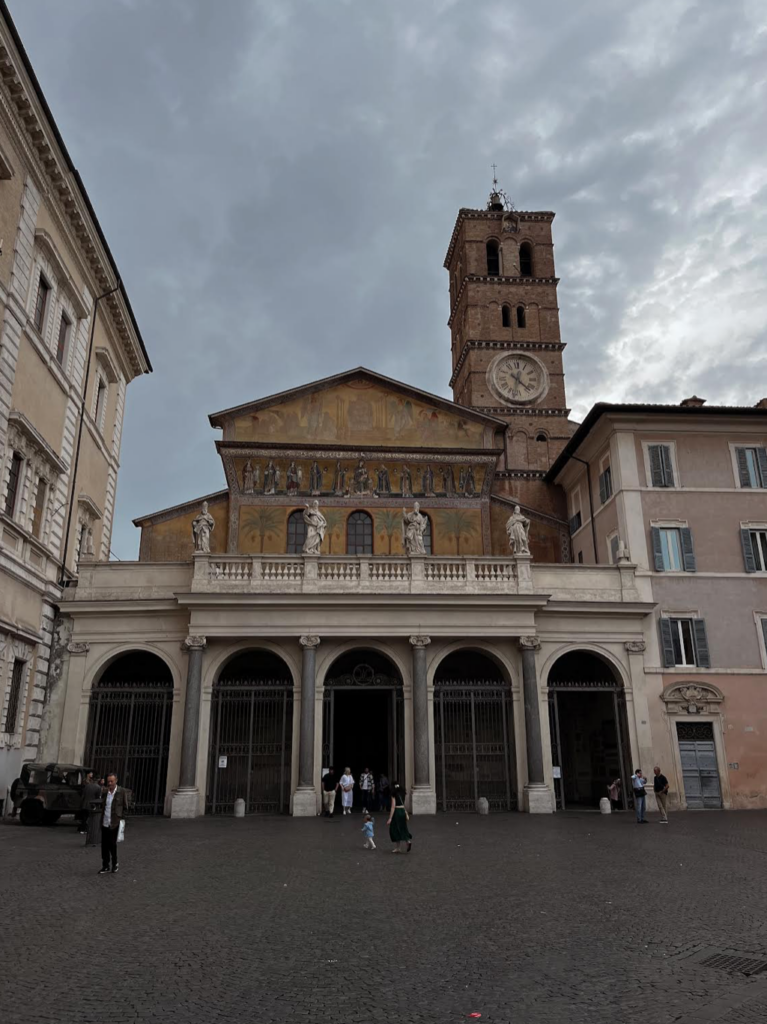
Drink Out of the Public Fountains – The Nasoni
Literally translated to big noses in Italian, the Nasoni are a feat of public ingenuity that has existed in Rome since the city’s founding. The Nasoni provide clean, fresh, and free drinking water carried from the mountains by aqueducts that were created in ancient times. If you put your finger in the main spout, water will come gushing out like a water fountain through a small hole. Remember to carry a refillable bottle to stay hydrated while exploring Rome.
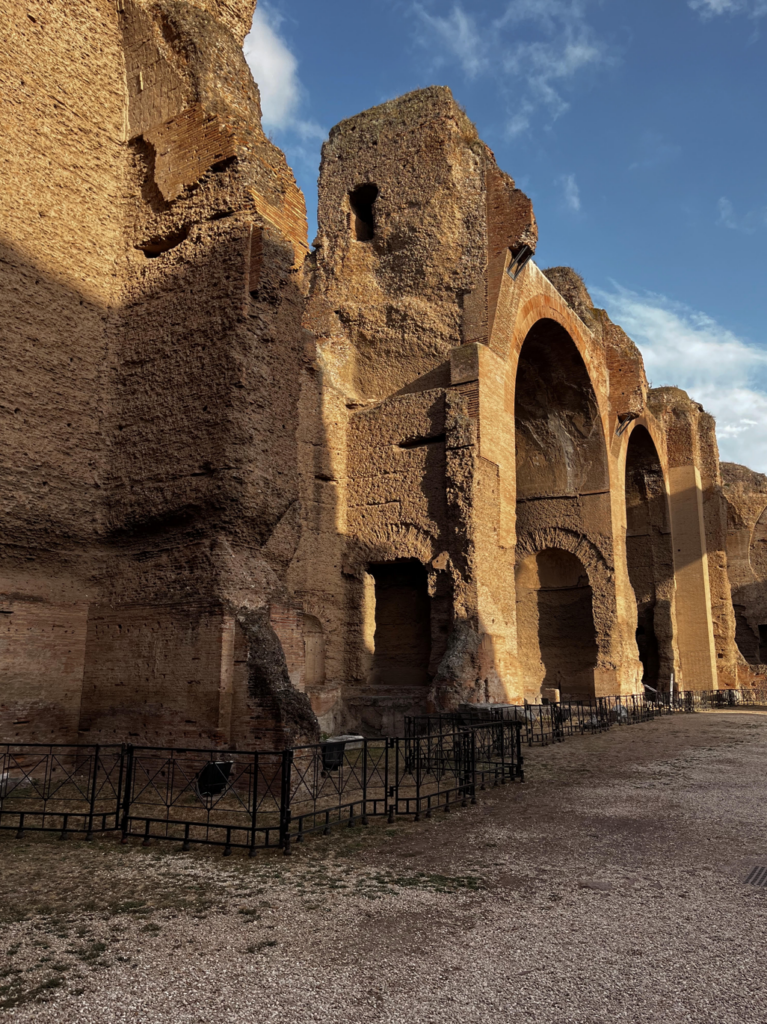
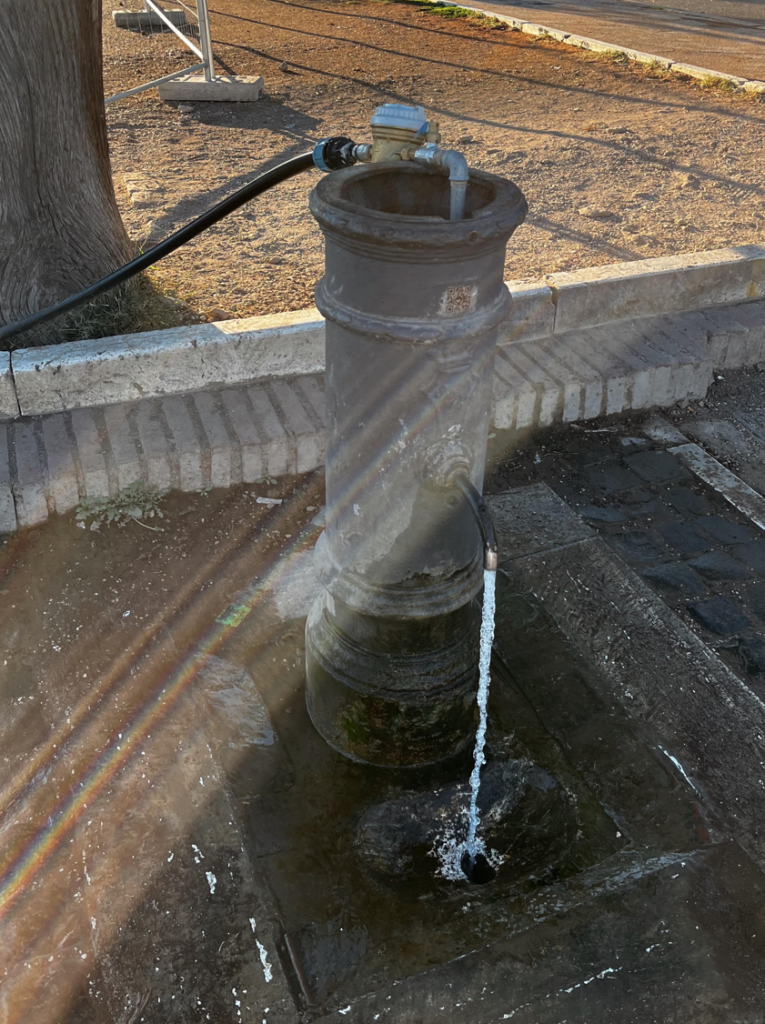
Book in Advance and Visit Monuments Early
I don’t think there is a city in the world with as many landmarks or archeological sites as Rome. Because of this, there are a couple of key things to keep in mind when visiting the countless ruins, churches, museums, and other monuments while exploring Rome.
Book Tickets In Advance
Firstly, book your tickets in advance. Pre-Purchasing tickets to sites saved me hours waiting in line just to enter. This will leave you more time to explore and experience the city to it’s fullest potential.
Create a list of the places you want to visit and track which tickets you have already purchased.
Start your day early – Best for beating crowds and photos
Secondly, I visited sites at opening times. Visiting popular attractions like the Colosseum and Vatican Museums when they opened allowed me to experience the fullness of these incredible places with significantly fewer tourists. Additionally, I went to public spaces like Palazzo Navona and the Trevi Fountain just before sunrise to have these famous monuments almost all to myself.
Also, I arrive to major sites 15 minutes before opening whenever I travel. Starting my day early was also a cool way to see the city wake up and come to life. The early morning also provides the best lighting for taking photos in Rome.
I tried to visit sites that where close together and in the same neighborhood while exploring Rome to make the most of my time in the Eternal City. This helped me so I don’t have to retrace my steps since Rome is a tone of walking. Google Maps is a great travel resource to plan which places are closest together.
// Travelers guide to using Google Maps (COMING SOON)
Best Time to Visit Rome

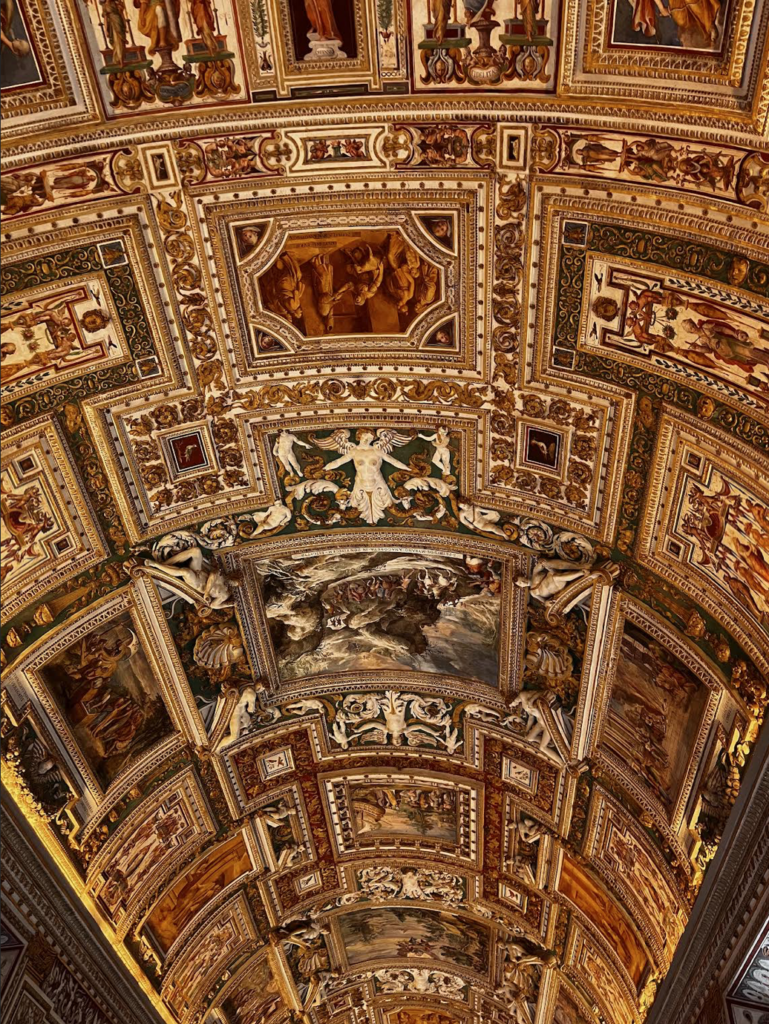
June through September is the busiest time to travel to Rome. Rome is one of the busiest and most traveled cities in all of Europe. Because of this, the city overflows with tourists from every corner of the globe who come to visit some of the most remarkable ancient structures, opulent churches, and cherished works of art in the world. The Eternal City averages an annual 5 million visitors in the height of the summer months.
I knew that visiting Rome among the crowds of this volume would take away from the creativity and inspiration I wanted to experience while exploring Rome. Additionally, the city gets quite warm in summer while trekking the old cobblestone streets in the historic center.
Pro Tip – Visit During the Off Season
I visited Rome in mid October. I experienced pleasant fall weather and thinner crowds. There were occasional clouds, but I found fall in Rome to be really pleasant. I have heard Spring is nice with blooming flowers in parks like Villa Borghese and lively Easter celebrations. Winter in Rome also has fewer crowds and festive holiday decorations around Christmas, although there is more cold and rainy days.
The 2025 Roman Catholic Jubilee
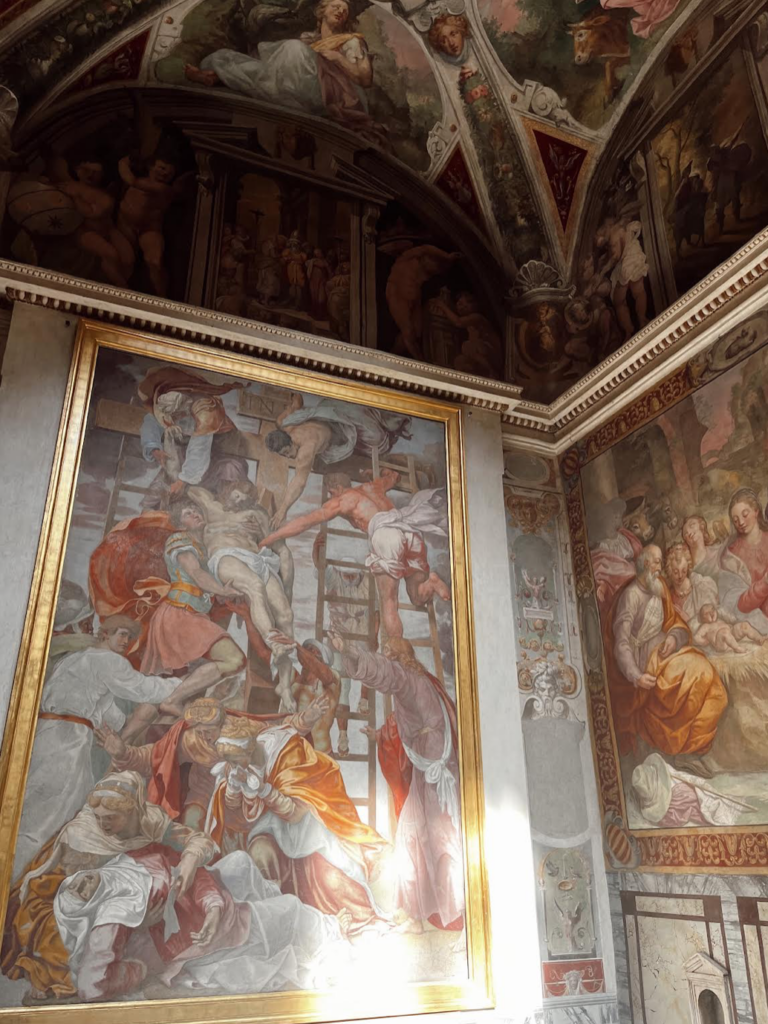
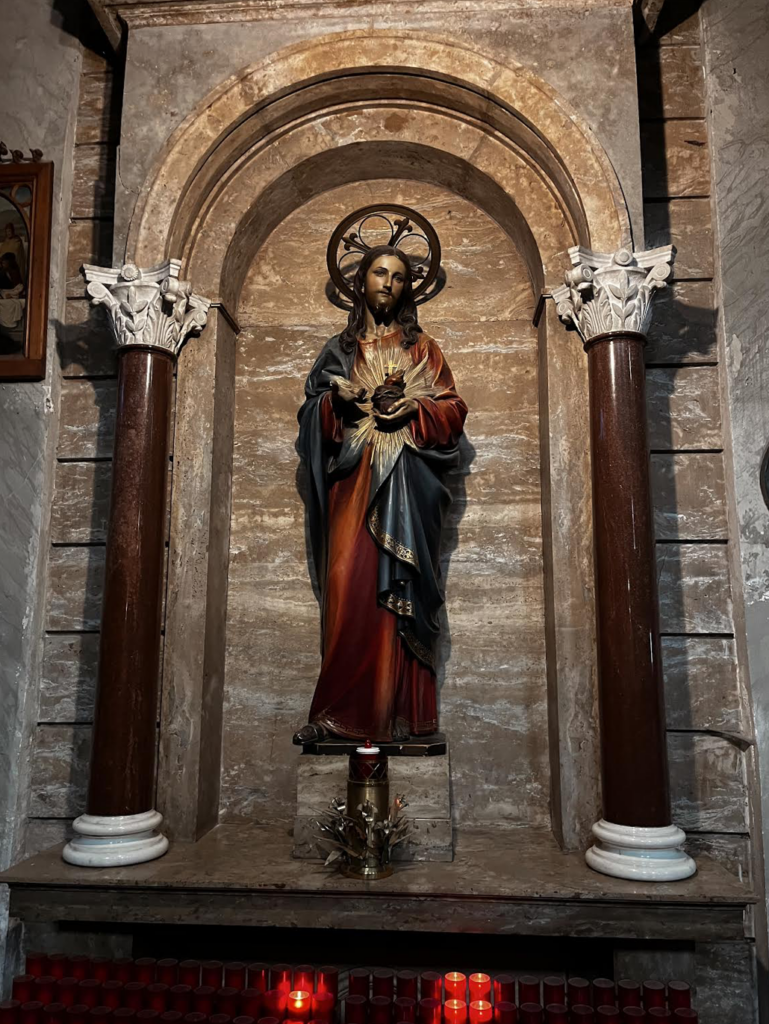
2025 will be an interesting time to visit Rome because of an event known as the Jubilee. Every 25 years, the Roman Catholic Church celebrates a Jubilee or time of spiritual and personal renewal. Catholics can receive spiritual blessings or indulgences from participating in religious rituals in the Eternal City and visiting certain churches and holy places.
You may be wondering what the Jubilee means for travel to Rome in 2025. Usually, Rome receives an average of 10 million travelers a year. The Jubilee will welcome an estimated 30-32 million visitors to Italy’s capital. The influx of travel to Rome in 2025 is surely due to religious tourism during the Jubilee.
However, don’t be deterred from exploring Rome in 2025. The Jubilee will be a unique time to experience Rome. Additionally, many of the most famous sites in the city have been completely renovated and cleaned for the Jubilee celebration.
Transportation in Rome
There are many ways to travel and get around while exploring Rome.
Metro
Rome does have a metro system. The metro is a great way to get around two neighborhoods of the city that are relatively far from each other.
One downside of the metro is its limited coverage. Some stations are far apart and certain areas, like the trendy neighborhood of Trastevere, have no access at all.

//Rome Public Transportation Official Site
Buses
Another public transportation option is buses. The buses serve areas not connected by the metro.
A single fare bus ticket is €1.50. Many travelers have remarked that it makes for a scenic way to see the city. I will definitely be trying the buses out for myself when I return to Rome.
Taxi and Ride Share
Rome offers both traditional taxis and ride shares. While taking taxis in Rome, make sure the meter starts or agree on a set price before the ride. If you are staying in a hotel, they can order a taxi for you.
Uber and Lyft are fully operational in Rome.
Bikes and Scooters
The eternal city is becoming much more bike and scooter friendly. Apps like Lime and Bird make renting bikes and scooters an enjoyable method for exploring Rome.
Walking
In my opinion, the best way to get around Rome is by walking. Many of the sites in the historical center of the city are in close proximity to each other. This is especially true in the neighborhoods of Centro Storico, Monti, and Ripa.
Walking allowed me the flexibility to discover hidden gems tucked in the corners of the cities cobblestone streets at my own pace. Additionally, getting 10,000 to 15,000 steps a day in Rome seems to be a universal traveler experience. Welcome to the club!
Trains – Best for Day Trips
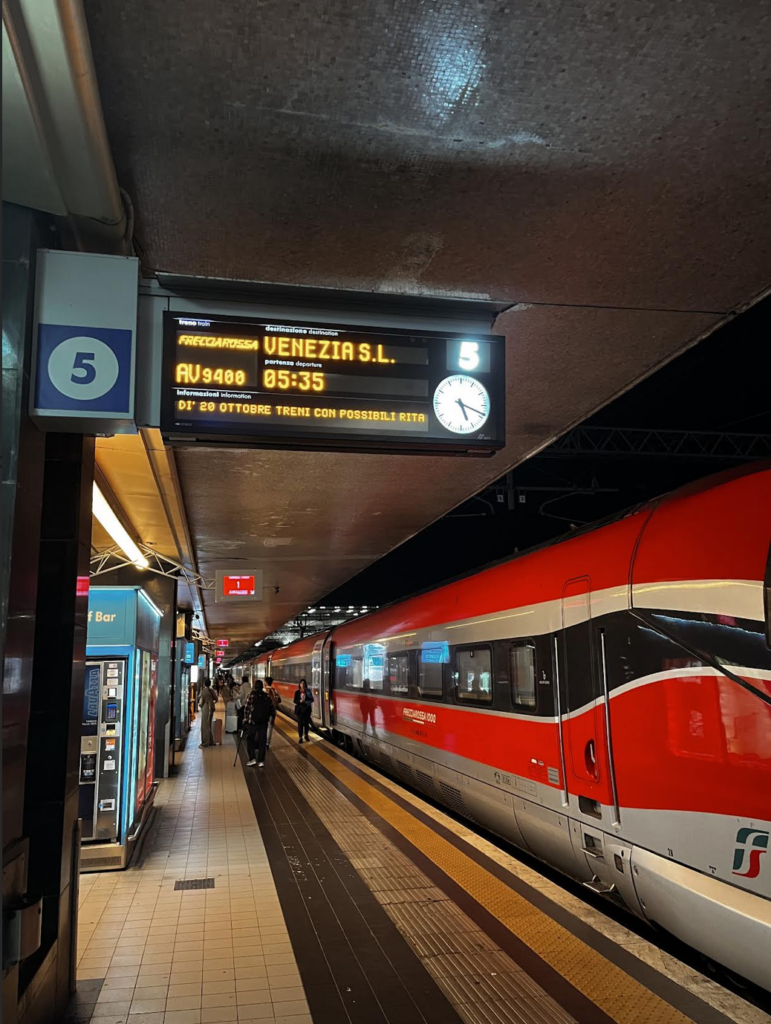
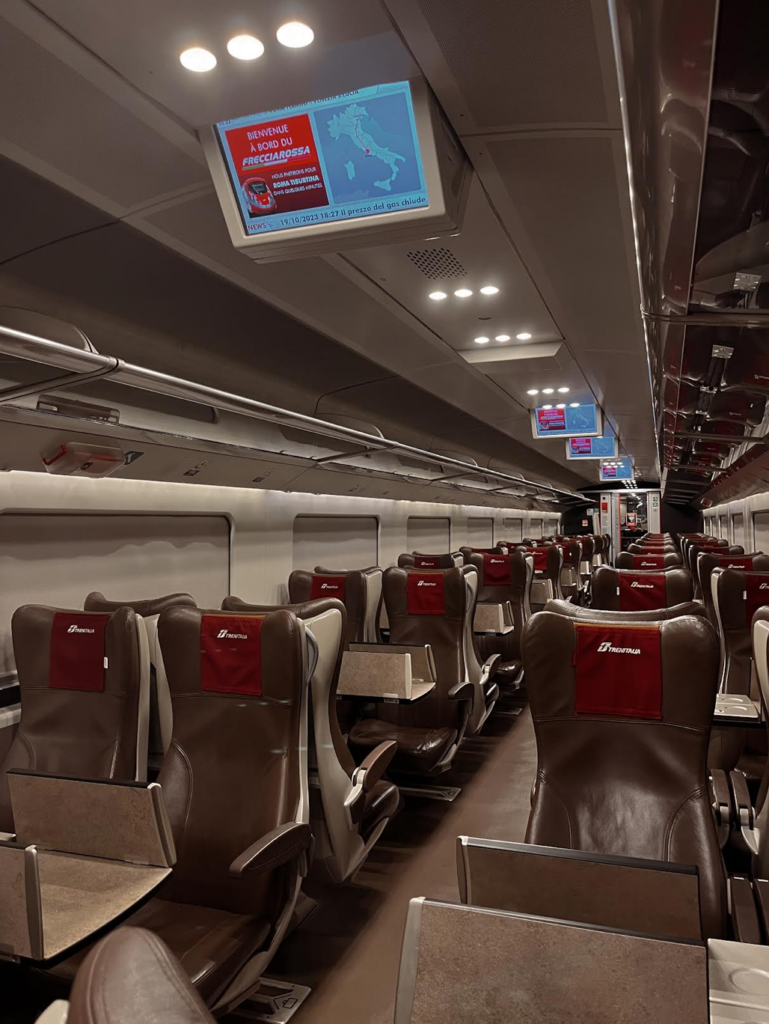
It is incredibly easy to take day trips while staying in Rome. The Roma Termini station connects Rome to other Italian cities like Florence, Venice, Milan, and Naples. It’s even possible to take a train from Rome all the way to Sicily!
Taking a train is one of the most impressive methods of transportation I used while traveling Italy. Most bullet trains can travel up to nearly 200 mph. It’s very enjoyable to take in the green rolling hills and traditional Italian towns as the world speeds by.
Simply look on Google for the city you want to visit from Rome and all the available train schedules will come up.
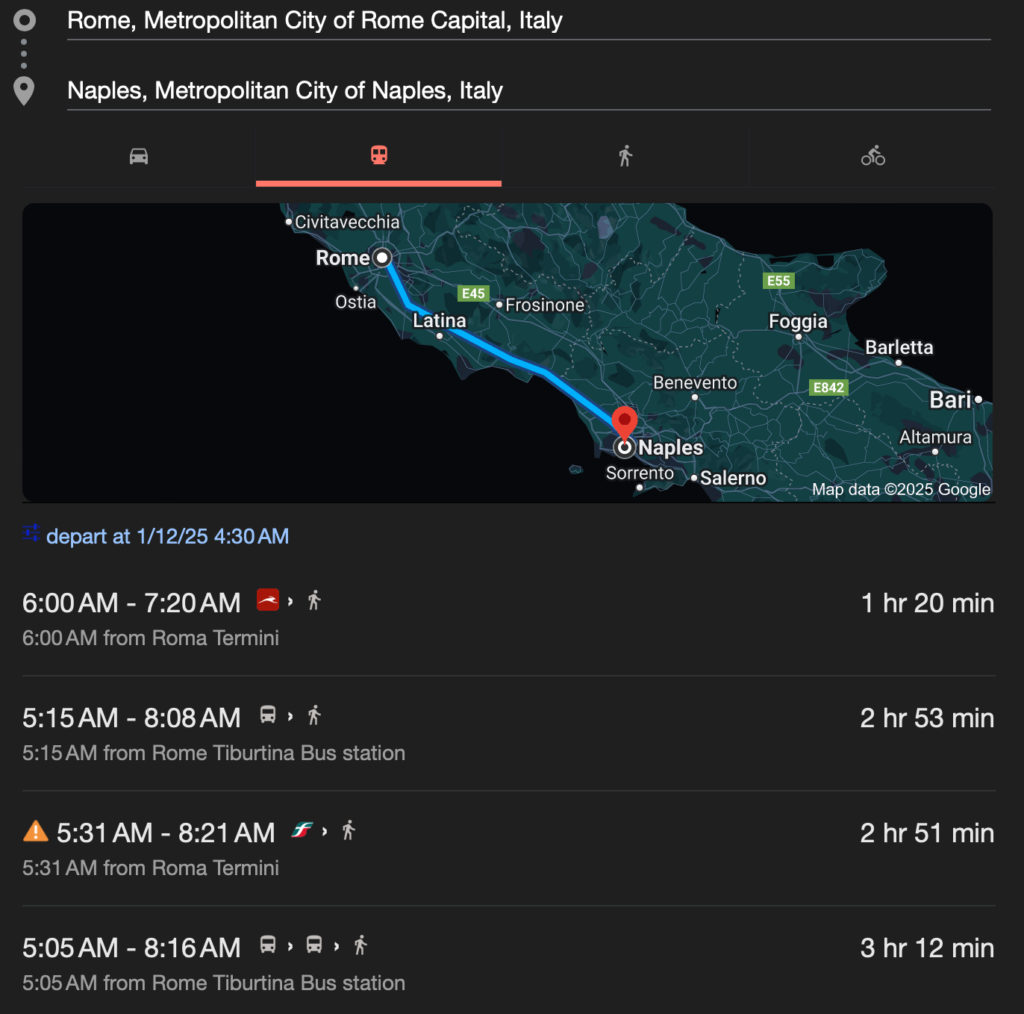
Tip: I recommend upgrading to business class for more comfortable seats and an overall luxurious experience.
I took day trips to Venice and Florence while staying in Rome. I have included everything you need to know about planning day trips to Venice and Florence below.
//Day Trip to Venice from Rome
//Day Trip to Florence from Rome (COMING SOON)
Rome Fiumicino Airport (FCO)
Rome’s international airport is around 20 miles from the city center. The airport itself feels very updated and modern. It’s one of my favorite airports in Europe. Additionally, it’s easy to navigate.
The airport is quite far from the historic city center. It can take between 30 minutes to an hour to get from FCO to the center of Rome depending on the time of day.
Getting from FCO to Centro Storico – The Heart of Rome
I took a taxi from the airport to the Centro Storico, the historic center of the old city. This is where most travelers stay when exploring Rome. It took around 30 minutes for me to get to my hotel after arriving just before midnight. Additionally, it cost around €50.
Alternatively, a cheaper and quicker way to get to the city is by metro or public bus. Both arrive at the Roma Termini station in the Esquilino Neighborhood. However, most travelers don’t stay near the train station and it’s a further daily walk from sites like the Trevi Fountain, the Piazza Navona, and the Colosseum. Also, it’s worth mentioning that the train station isn’t in the best area, so it’s best not to arrive at night.
Safety in Rome
The most common petty crime that occurs in Rome is pit-pocketing. The is especially common at busy and crowded sites. I wore a money belt while exploring Rome and kept my most important belongings securely stored at all times.
It’s best to avoid quiet and desolate neighborhoods and be careful around alcohol (watch them prepare your drinks).
Overall I felt very safe exploring Rome.
Where to Stay in Rome
The eternal city has accommodations for every travelers budget and comfort level ranging from luxury hotels, personal airbnbs, and youth hostels.
For first time visitors to Rome, I highly recommend staying in the Centro Storico, the beating heart of the city. The central location was perfect for exploring the many neighborhoods of the Eternal City during my first trip.
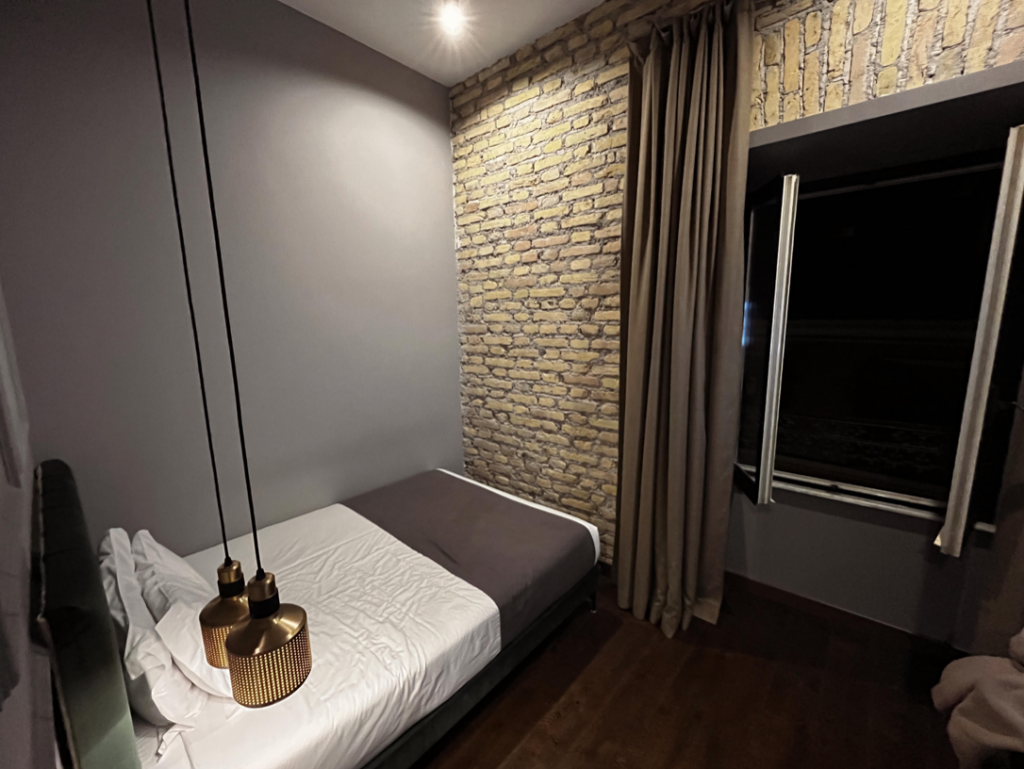
Hotel Chapter Rome
I stayed at a stylish and welcoming boutique hotel called Chapter Roma. My room was a mix of modern and industrial minimalism. It was perfect for me as a solo traveler and overlooked a cobblestone street that included ancient columns and a church. The 42 room hotel also has a bar and restaurant as well. It definitely had an artistic feel.
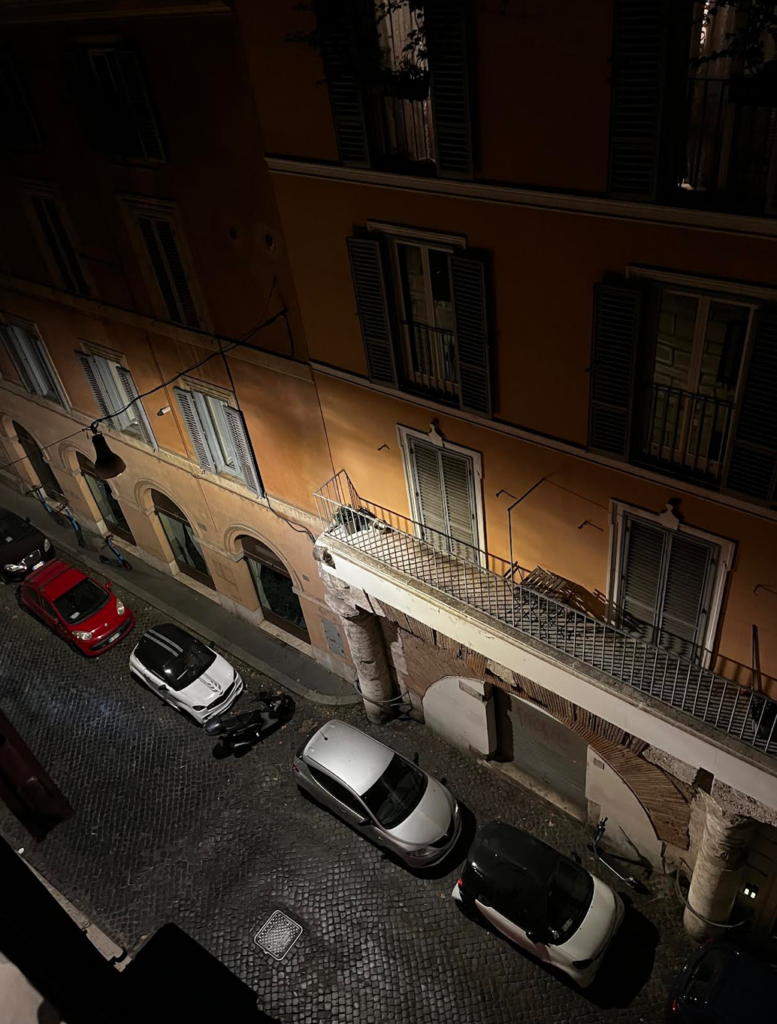

Cafes and Restaurants – Eating in Rome
The best advice about restaurants in Rome is to ask locals for recommendations. My favorite restaurants in Rome where family owned restaurants that served authentic Italian food and Pizza. There are a-lot of restaurants in Rome. That means there are many good but many mediocre food options. Always check google reviews before deciding where to eat.
My favorite Pizza in Rome was Emma Pizza in Centro Storico. Another of my favorite meals in Rome were the sandwiches at All’ Antico Vinaio. The sandwiches are world renowned for how large they are. It was one of the best sandwiches I’ve ever had.
Order a Cappuccino Whenever you Want
A common misconception about coffee in Rome is that it is inappropriate to order a cappuccino after noon. This is a myth. Many cafes will gladly serve you a cappuccino any time of day. It may not be super common for local Italians, but most cafe owners will probably just greatly appreciate your business. Additionally, iced coffee in Rome is not popular in Italy but they can still make it. This is your trip, and you should have your coffee however you want.

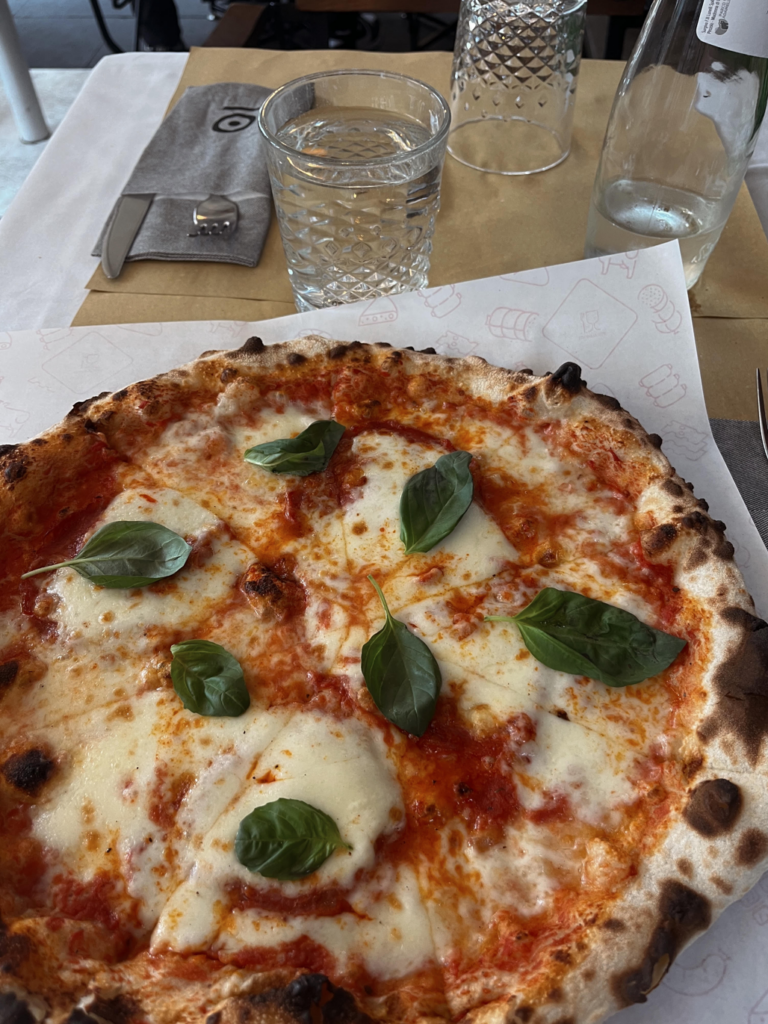
EXPLORING ROME – 4 Day Itinerary
Day 1: Explore Centro Storico and Trastevere
Centro Storico – Heart of the Eternal City
I started my first day in Rome early before sunrise and ventured into the cobblestoned streets of Centro Storico. Only impeccably dressed Italian business men and nuns in route to their daily religious obligations shared the street. The Centro Storico is a fantastic place to begin exploring Rome.
Centro Storico is the cultural and social heart of the city. It is a labyrinth of old cobble stone streets leading to vast fountain adorned plazas and baroque squares. Many of the cities most cherished landmarks and hidden treasures can be found here.
Along my morning walk, I discovered old Roman ruins built into the fabric of the modern city. What I had casually walked by was the Largo di Torre Argentina, the site of Julius Caesars assignation. Symbolically, this is one of the most important places in the city as the death of Julius Caesar brought the transition from the Roman Republic to the Roman Empire. What followed was increased regional wealth and power concentrated in the city, solidifying eternal significance.
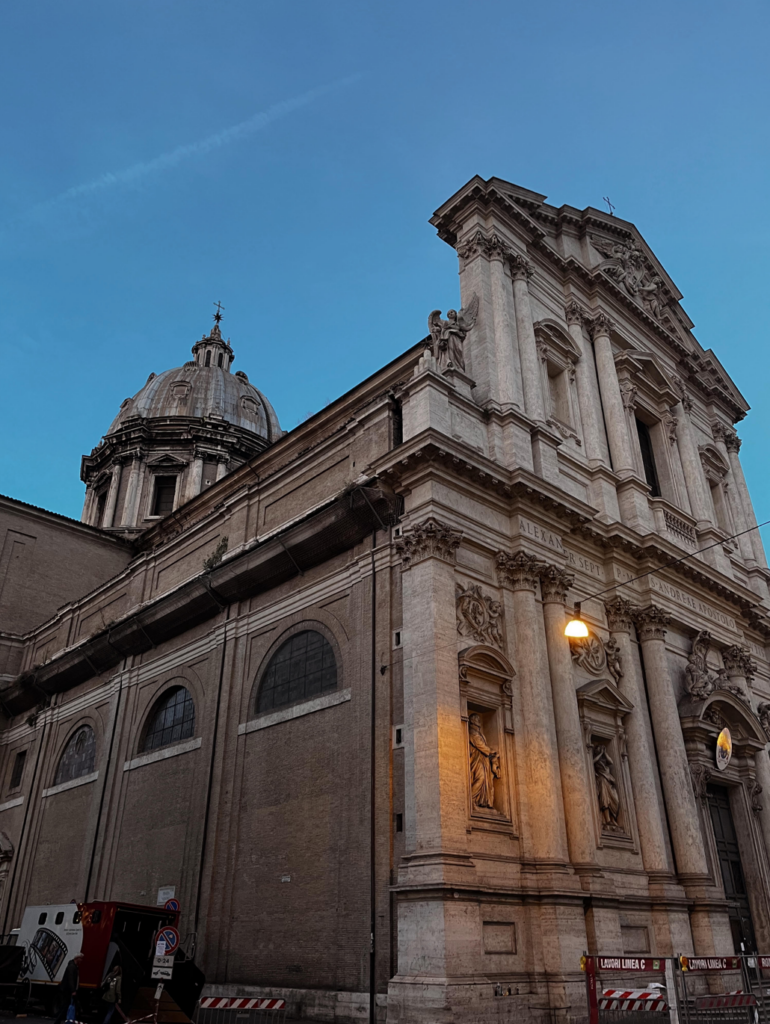
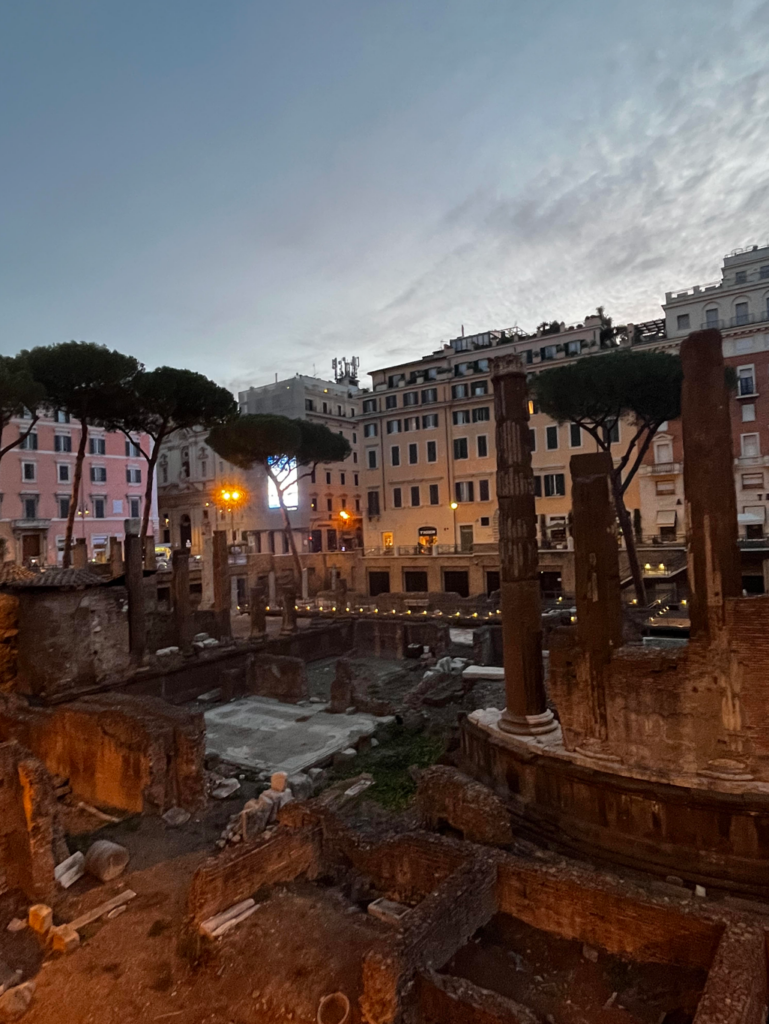
Piazza Navona
A few narrow, windy streets led me to the vast Piazza Navona. The Piazza Navona was commissioned by the emperor Domitian in the 1st century AD and was originally built to house gymnastics competitions. This iconic square has several incredibly detailed fountains, baroque churches, and charming cafes. I had almost the entire Piazza Navona to myself as the sun continued to climb.
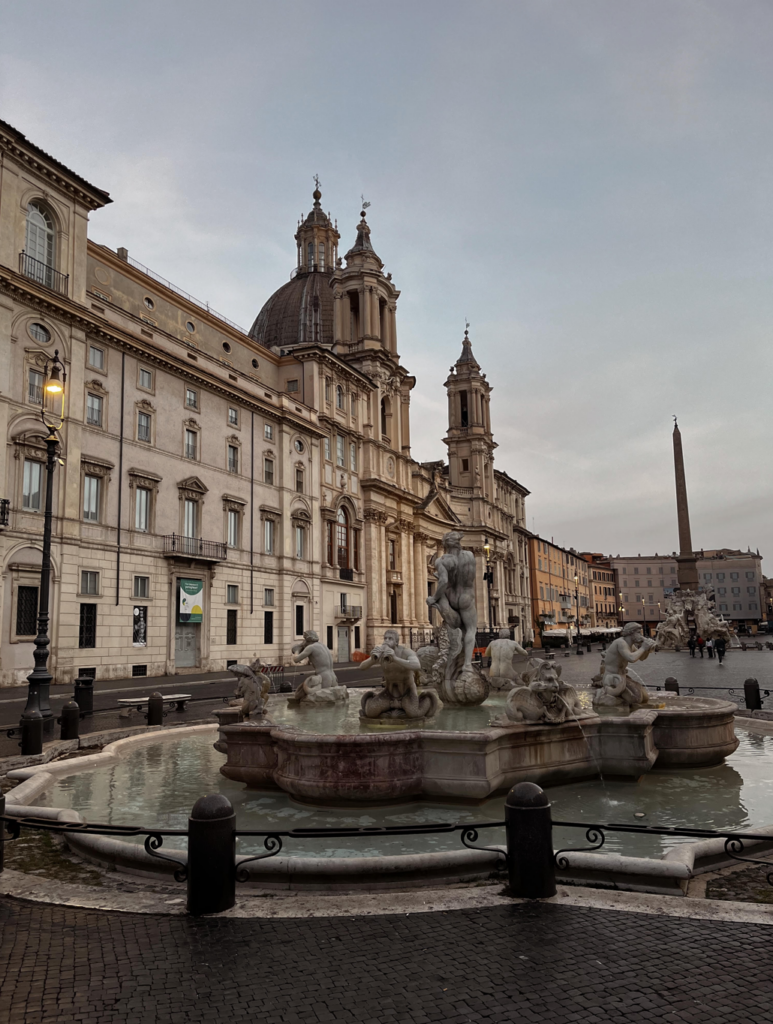
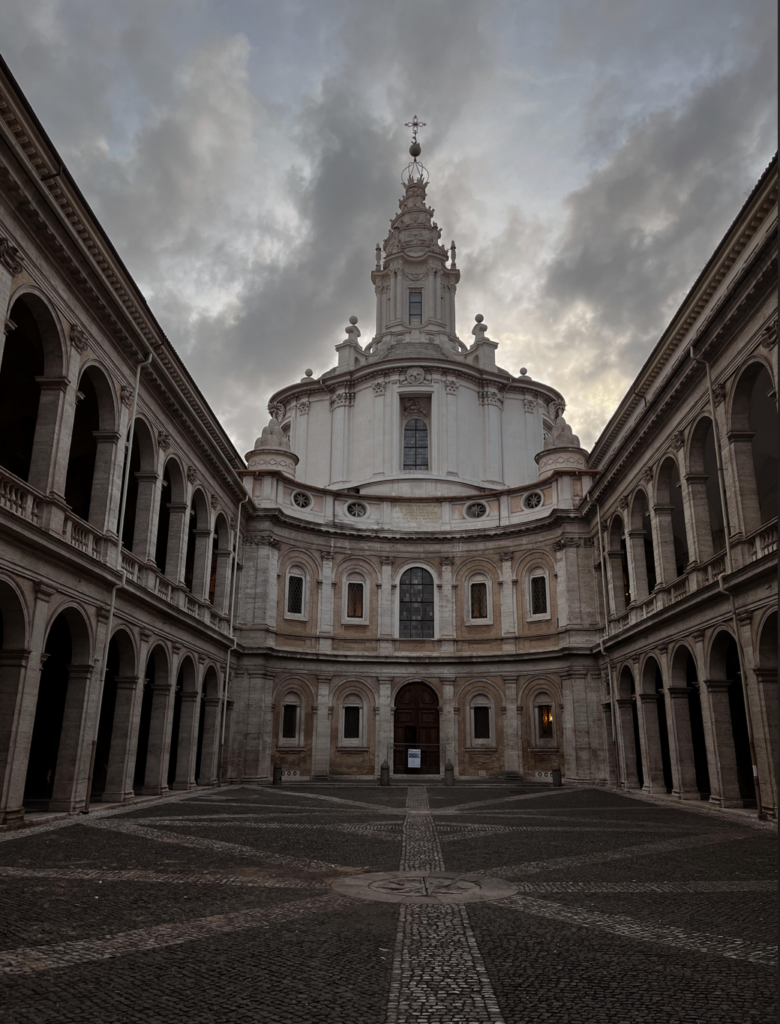
The Pantheon
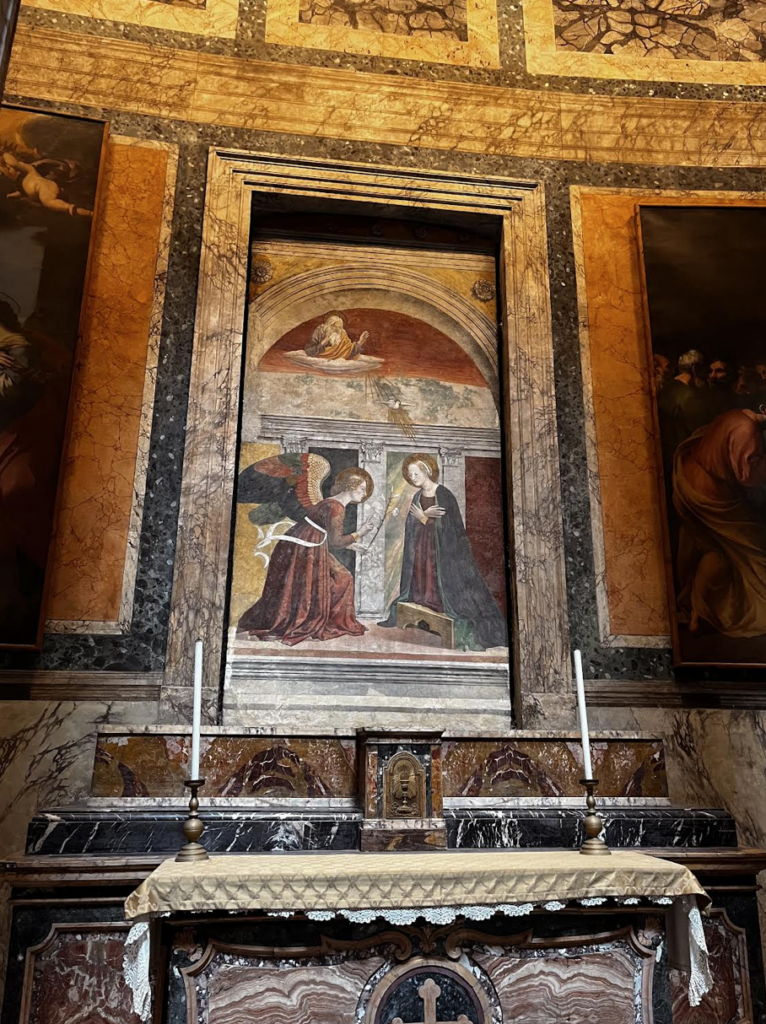
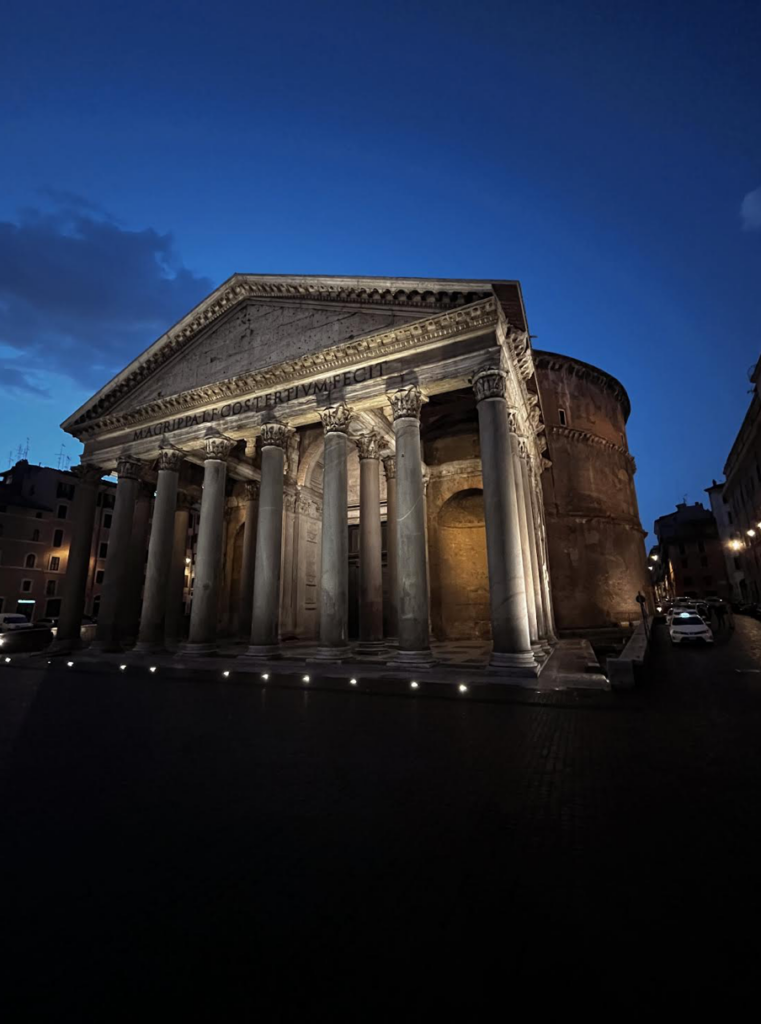
Next, I headed to retrieve my tickets for the Pantheon, one of the oldest buildings in Rome. The Pantheon is unlike any other building I have experienced on my travels. Just standing in front of the Pantheon’s columned porch you feel a connection to how old this building actually is and how much change it has witnessed.
Originally built in 25-27 BC as a temple dedicated to the 12 Roman gods, the Pantheon was later consecrated as a church titled the Basilica of St. Mary and the Martyrs of Rome. The Pantheon’s most impressive features is the massive concrete dome with a hole in it called an oculus and its timeless porch of columns. On the Catholic feast of Pentecost, rose pedals are dropped from the oculus into the church.
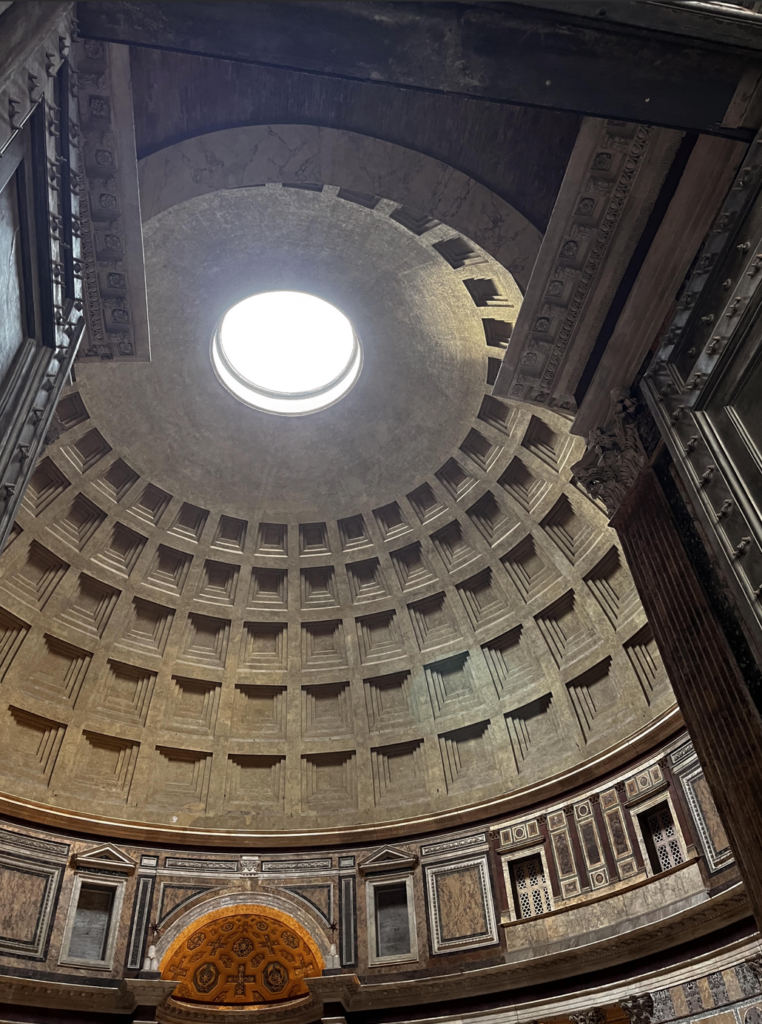
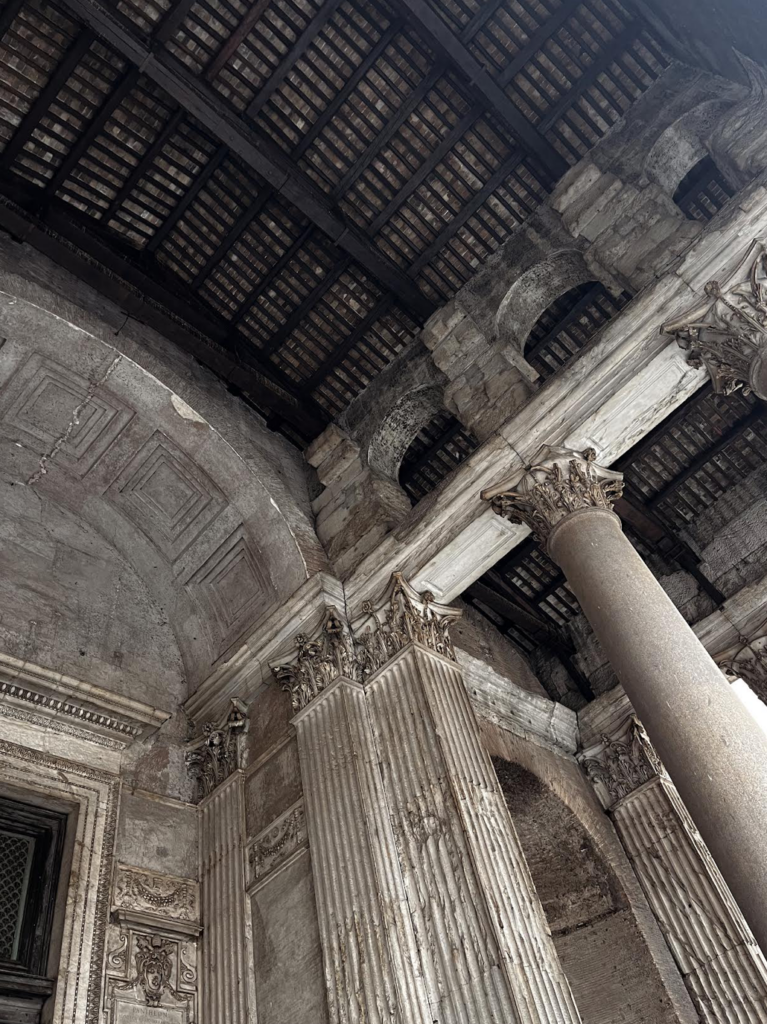
The Pantheon became one of my favorite buildings in the city. You can purchase your tickets to the Pantheon here.
// Note Pantheon tickets can be picked up at Via dei Bergamaschi 49.
Church of St Ignacio of Loyloa
Next, i headed to the nearby church of Sant’ Ignazio of Loyola. Inside, the church has a 3D-like painted ceiling of heaven with angels and saints suspended in the sky. It is one of the most breathtaking pieces of art in the entire city. The church even has a mirror in the center of the church so you can take a picture of yourself in the heavens and clouds
// (Note: have a 1 Euro coin on hand to illuminate the mirror for best lighting in pictures).
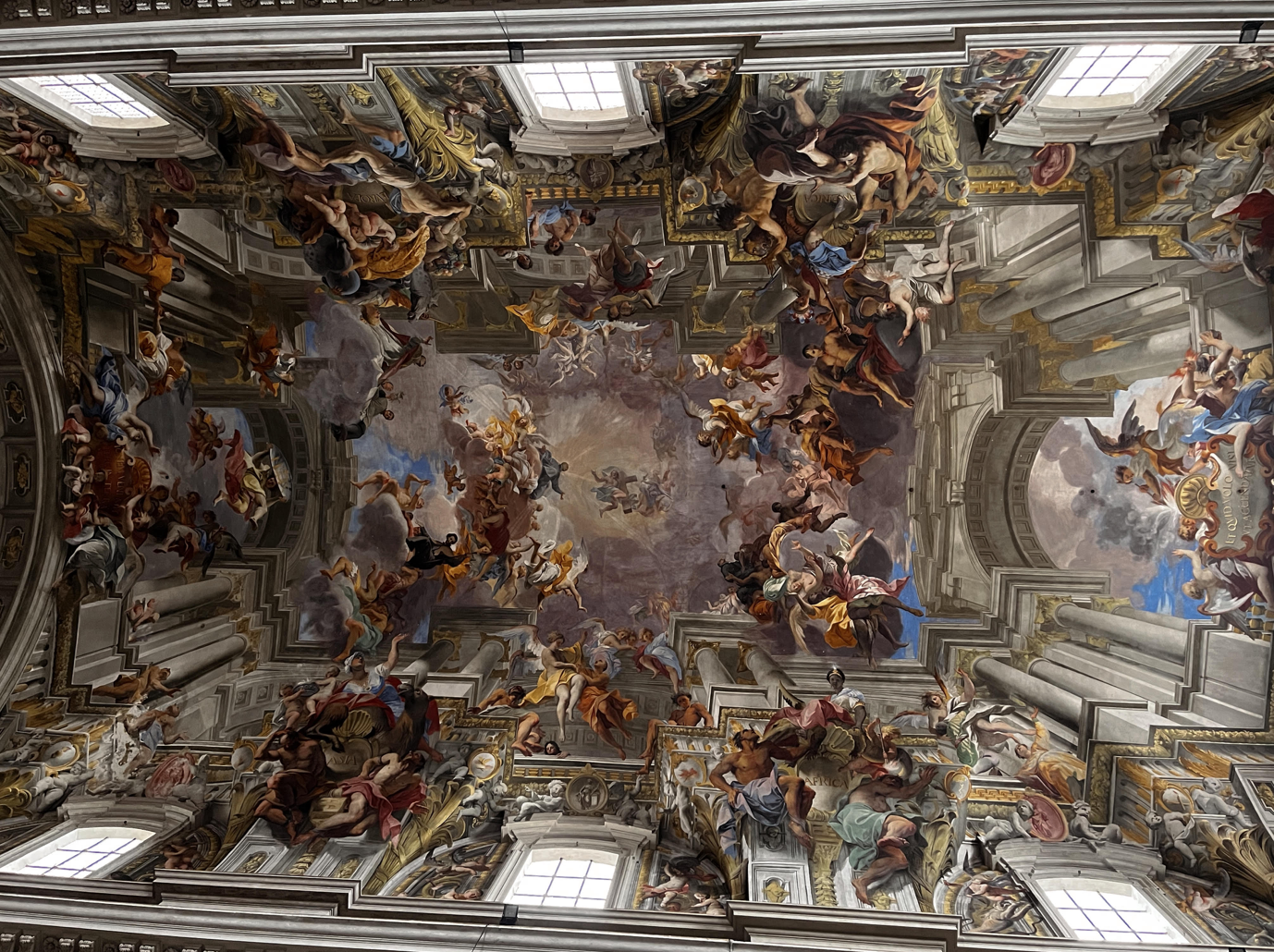
Basilica of St Mary Minerva
This is one of the only remaining examples of Gothic architecture in Rome. Don’t miss the beautiful marble sculpture by Michelangelo of the risen Christ holding the cross next to the altar.
// The Pantheon, the church of St Ignacio of Loyola, and the church of St. Mary Minerva are all very close together.
Street Shrines to the Virgin Mary
Throughout the city, I discovered many shrines to the Virgin Mary built on the side of buildings and above bustling streets. Tucked away in the corners of neighborhoods, these are cherished spaces highlighting the cultural and religios importance of the Virgin Mary in the eternal city.
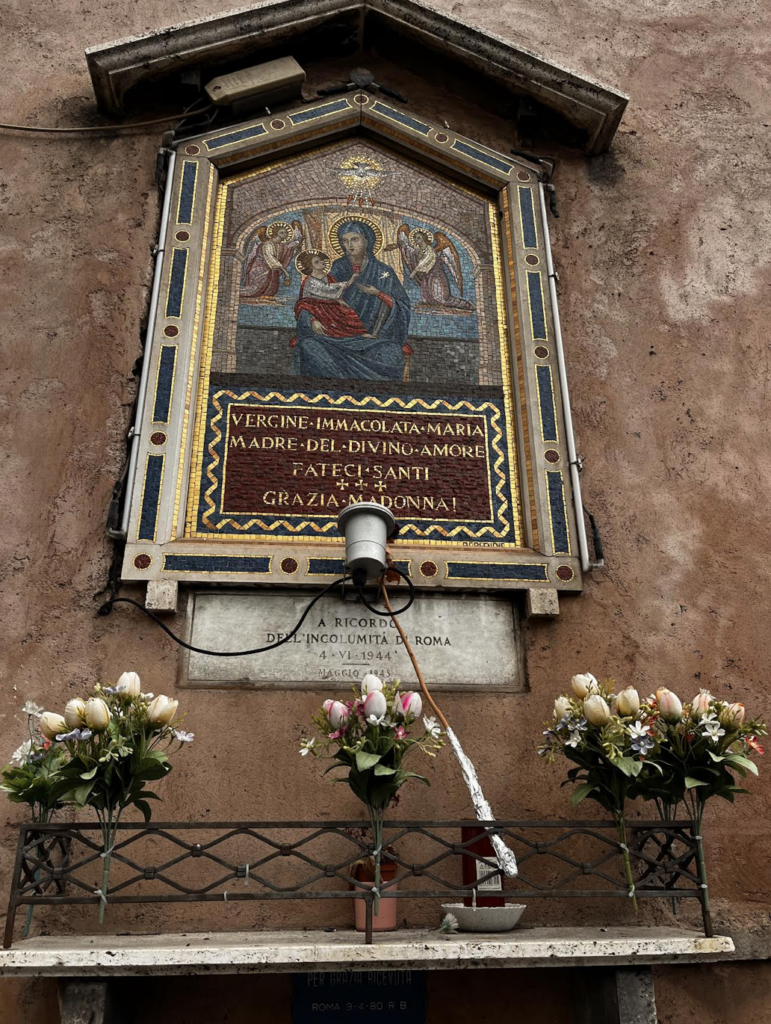
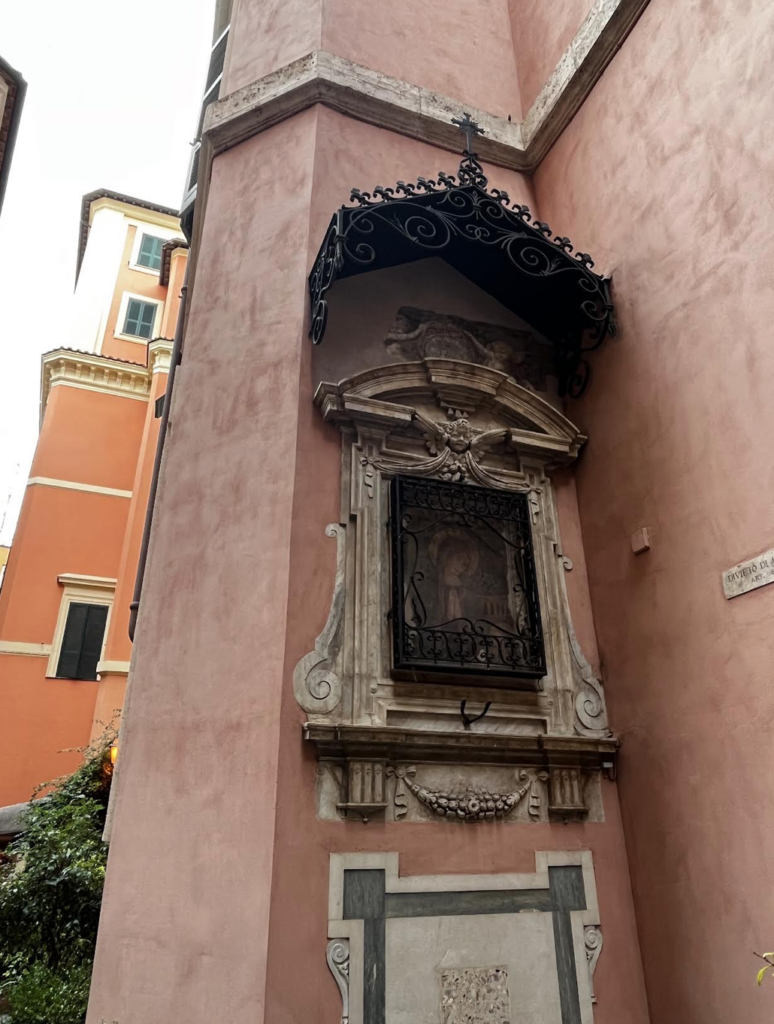
Lunch at All’ Antico Vinaio
For lunch I ate at the world renowned All’ Antico Vinaio. This sandwich shop exploded in popularity due to Tiktok and Instagram as one of the best places to eat in the city. My sandwich was bigger than the size of my head. The best seller is called La Favolosa and contains salami, pecorino cream, artichoke cream, and spicy eggplant.
Afternoon in Trastevere
After a quick but well needed nap from my busy morning, I headed over to explore the Trastevere Neighborhood. Trastevere is a beautiful and bohemian working class district on the opposite side of the Tiber from the Centro Storico. The literal translation is “across the Tiber”. Old medieval houses adorn charming streets and walls of ivy drape the side of buildings and hang over aged cobbled stone streets. Far from being off the beaten path anymore, Trastevere will give you a feel for traditional life in Rome. Trastevere is also popular among college students who gather to socialize after their studies.
Along the way admire the impressive Tiber river and its historic bridges. Also, check out Tiber Island situated in the middle of the river.
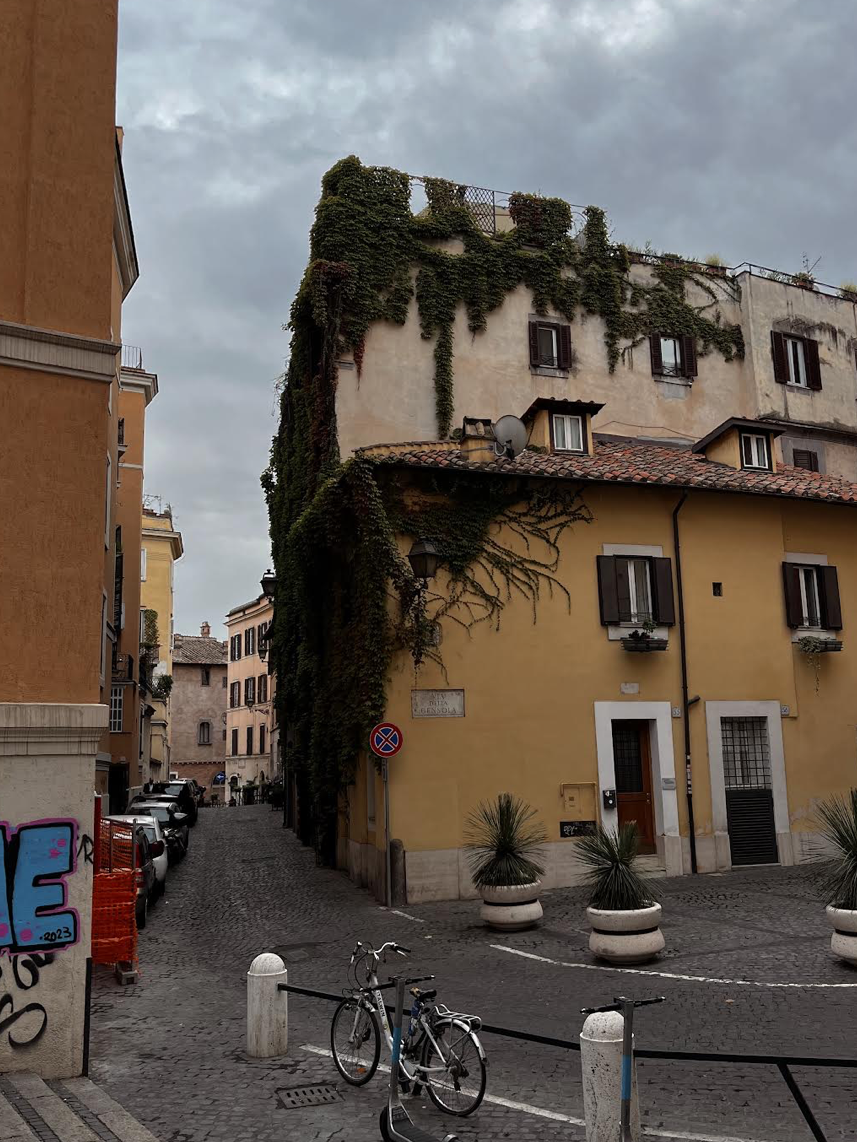
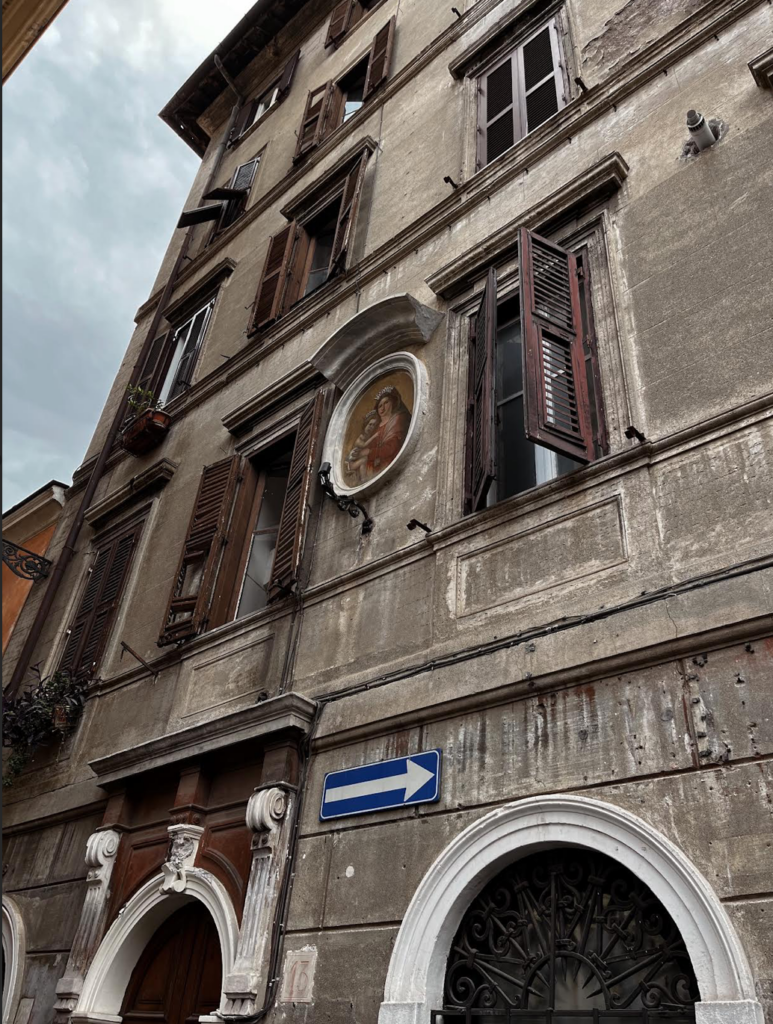
The Basilica of Santa Maria in Trastevere is the most impressive church in the neighborhood and is one of the four papal basilicas in Rome. It is a traditional basilica flanked by two rows of marble columns and decorated with glistening gold mosaics. The ceiling is also incredible and adorned with Gold detail with a painting of the Assumption of the Virgin Mary in the center. The Basilica of Santa Cecilia is another stunning church in the neighborhood.
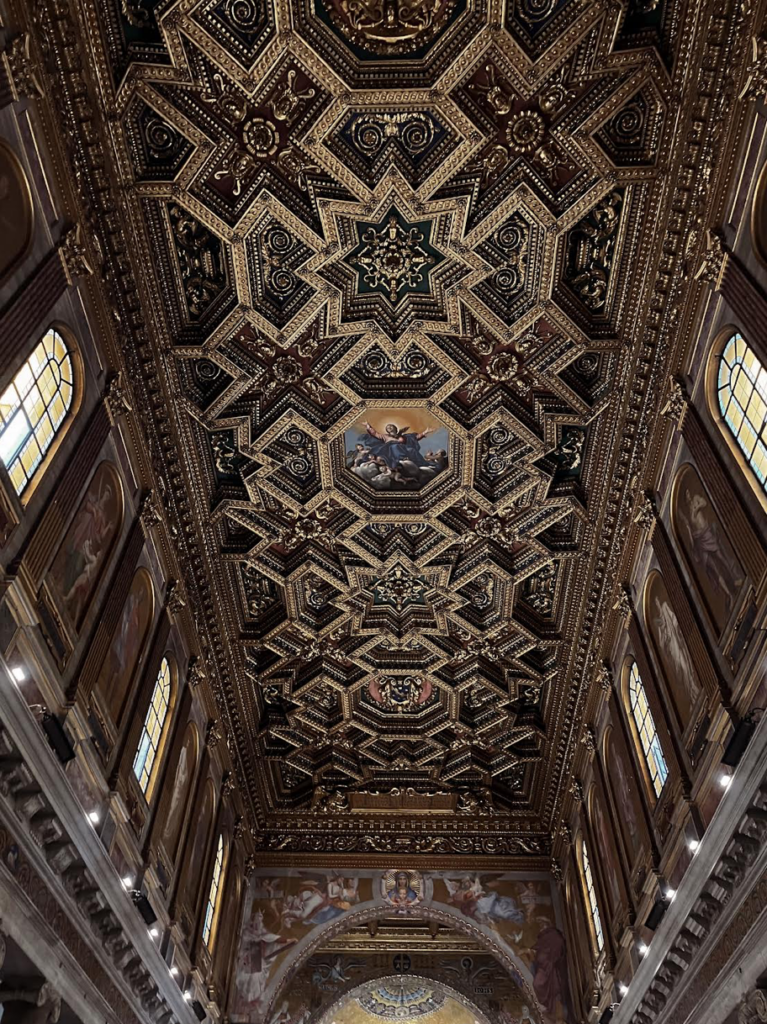
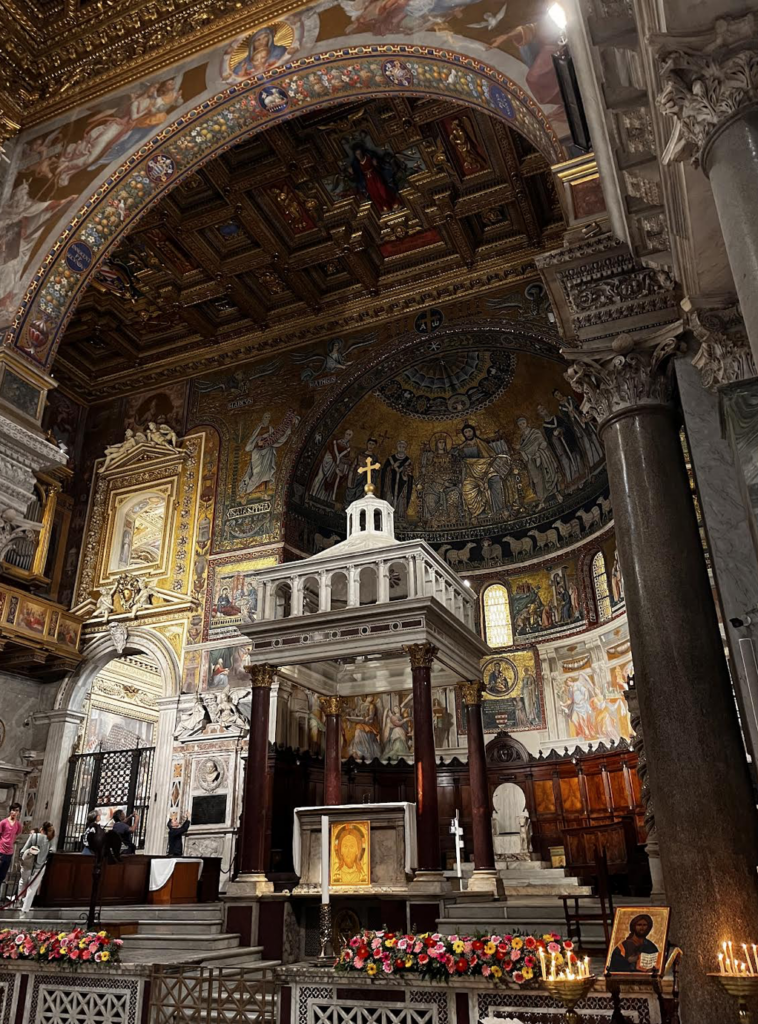
No visit to Trastevere is complete without stopping by the Biscottificio Innocenti Bakery. This bakery has been run by the same family for three generations and they use a beautiful custom oven to bake the biscotti cookies, to perfection. You can select your own cookies but I suggest buying an assortment bag to try everything for a few euros. They are the best Italian cookies in Rome.
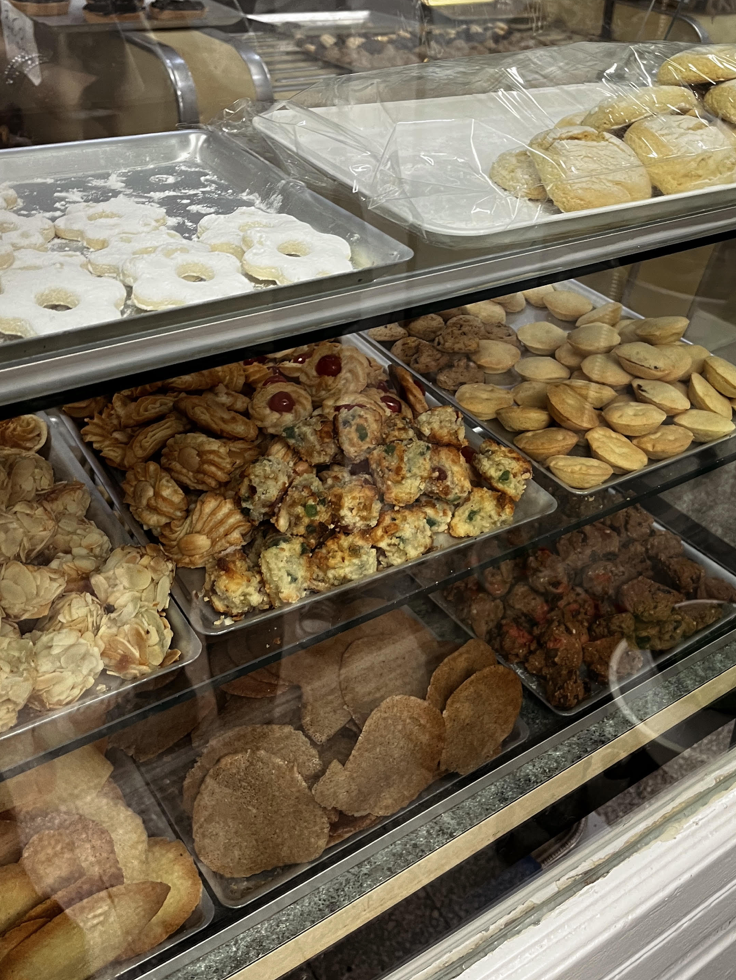

Day 2: The Colosseum, Ripa, and Monti
I started my second day exploring Rome with a brisk fall morning walk to the Colosseum. I got to see the city wake up and come to life as I strolled down the Tiber and through the streets of Ripa. The neighborhood of Ripa breathes an air of antiquity. It is one of the places in the city that reminds you of how old Rome actually is. Old roman ruins intertwine with marble baroque facades and medieval brick bell towers
Along the path to the Colosseum I saw many Roman pines, the tall thin trees that fan out at the top. Over time they have become iconic symbols of the eternal city. They were originally brought from Greece during the time of the Roman Republic and saw a resurgence in popularity during the Renaissance. Many more were planted during the time of Mussolini in the 1920s.
As you approach the Colosseum, don’t miss the Arch of Constantine, commemorating the emperor’s victory at the monumental and pivotal battle of the Milvian Bridge.
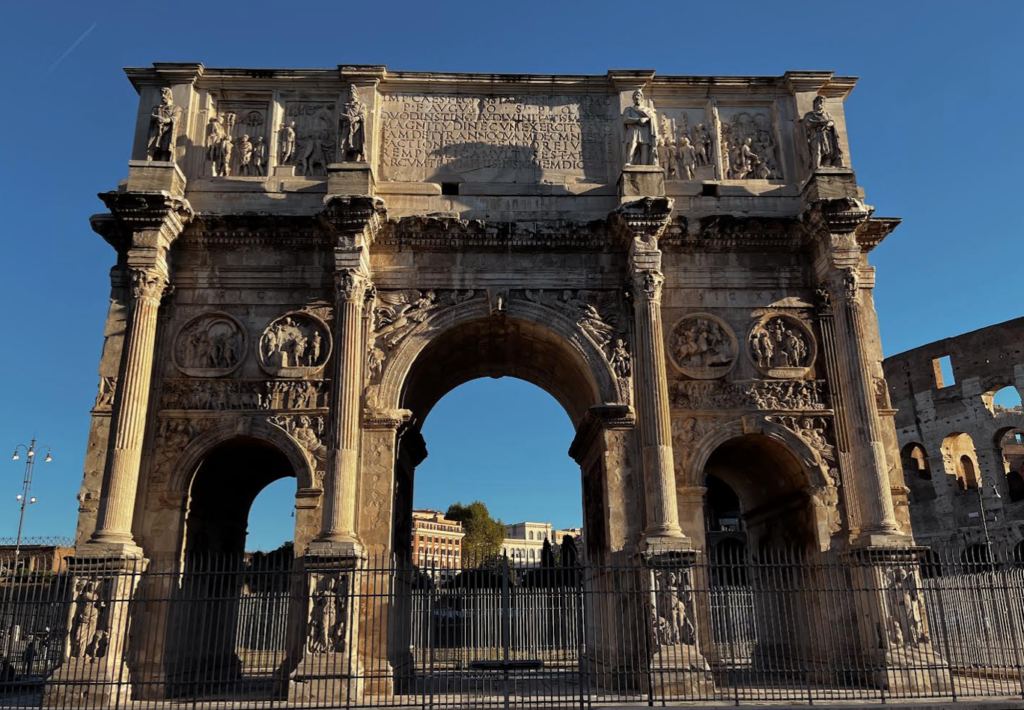
The Colosseum
The Roman Colosseum is a legendary building. During the time of the Roman empire it held gladiator matches that “entertained” the inhabitants of the city, regardless of class. They even brought wild animals from abroad and historical records document the arena being filled with water and ships engaging in live naval battles.
This was an incredible place to visit especially due to its global fame and reference in popular culture. What impressed me most about the Colosseum is how well preserved it is. This is a building that has been around for two thousand years.
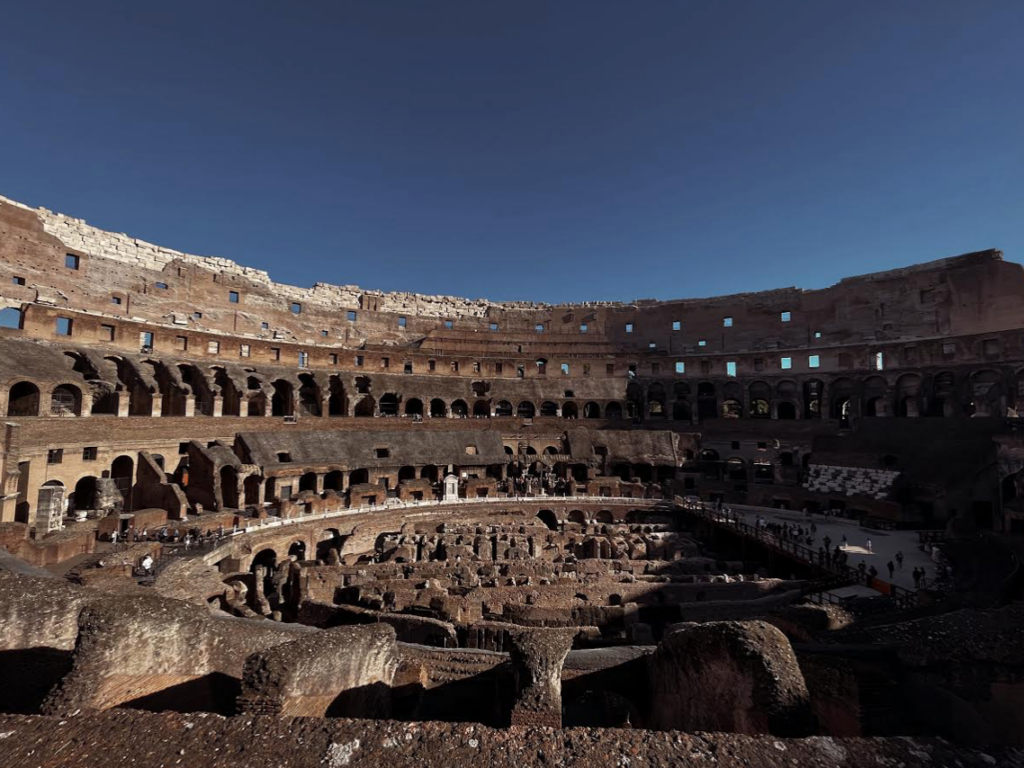
When visiting, you can’t help but ponder how grotesque it was that the Romans killed for entertainment and the large public martyrdom of Christians. I would recommend getting an audio guide to truly appreciate the history of the Colosseum.

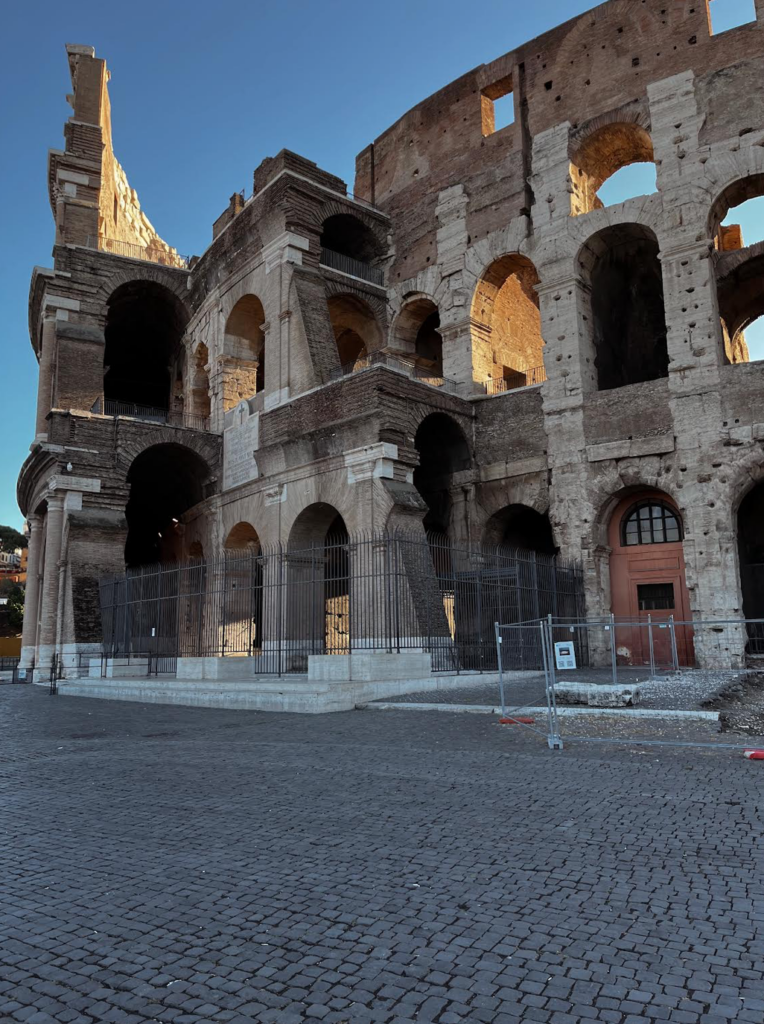
// Tickets: Purchase your tickets ahead of time here.
// Hours: Colosseum hours vary throughout the year. Check the opening and closing times for your trip here.
Note: I would suggest going when the Colosseum opens at and arriving early to find the line. This is one of the busiest places in all of Rome.
The Roman Forum and Palatine Hill
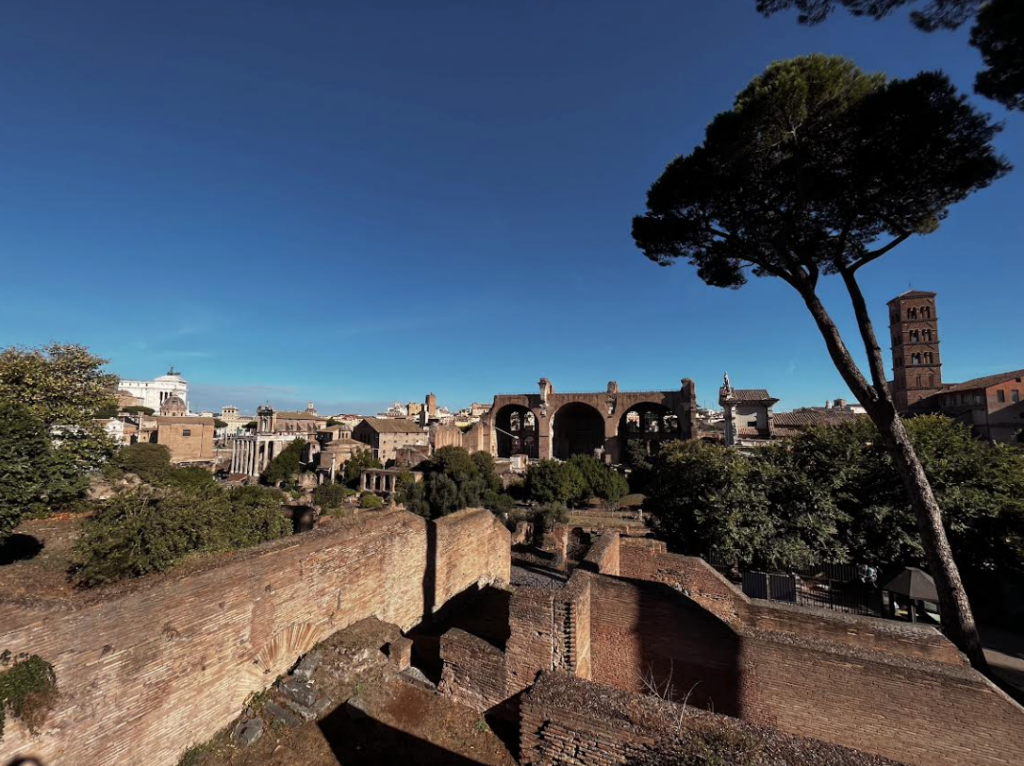
Right next to the Colosseum is the Roman Forum and Palatine Hill. The Roman Forum is an impressive archaeological park with many ancient ruins and structures. You can really appreciate the fullness of history when you are in the Roman Forum, as there are buildings from every time period.
The Palatine Hill offers some of the most incredible views of the city, the Colosseum, and the Roman Forum. There is also a rose garden with many beautiful flowers near the main observation points which is definitely worth checking out.
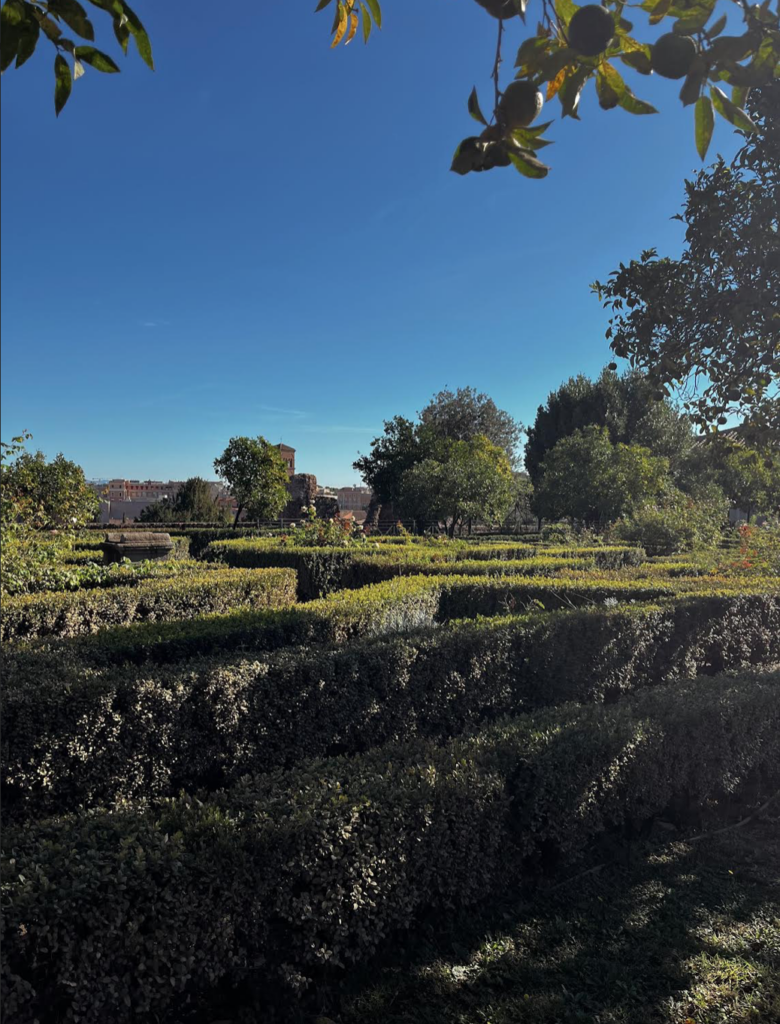
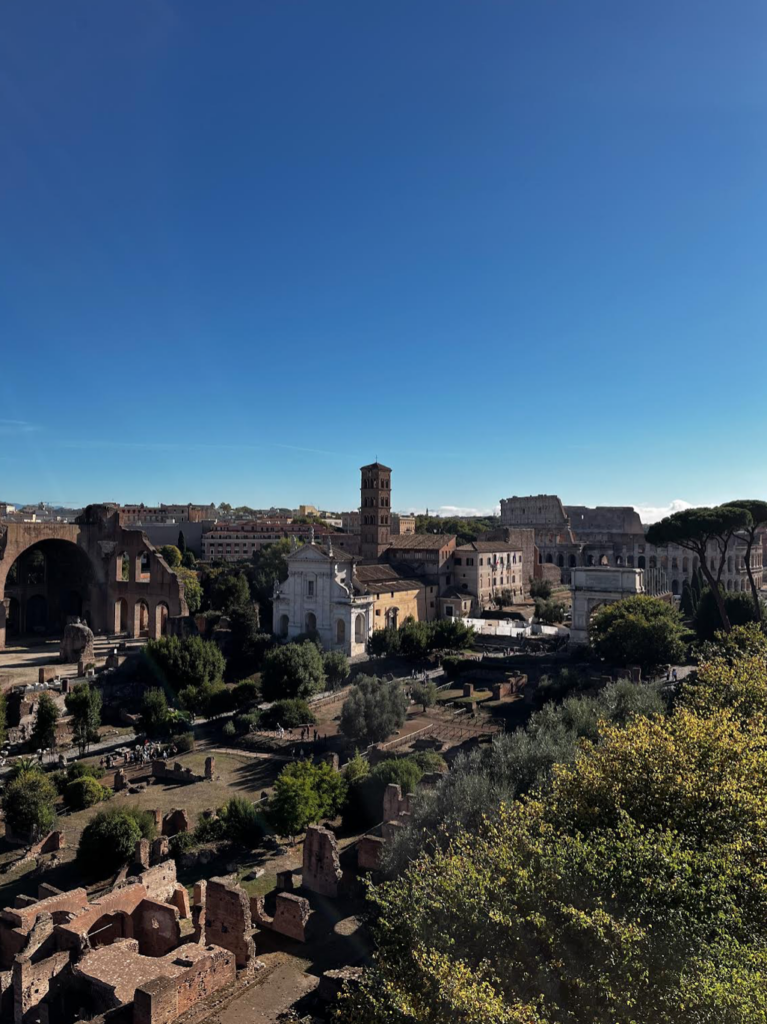
CHURCHES OF MONTI
I spent the next half of my second day exploring Rome visiting some of the incredible churches of Monti. Some of the most cherished churches in all of Rome can be found here.
As you make your way to many of the amazing churches in this area, I would pop into different cafes and explore the area. Monti is a lively neighborhood to discover.
Basilica Dei Santi Quattro Coronati – Basilica of the Four Crowned Martyrs
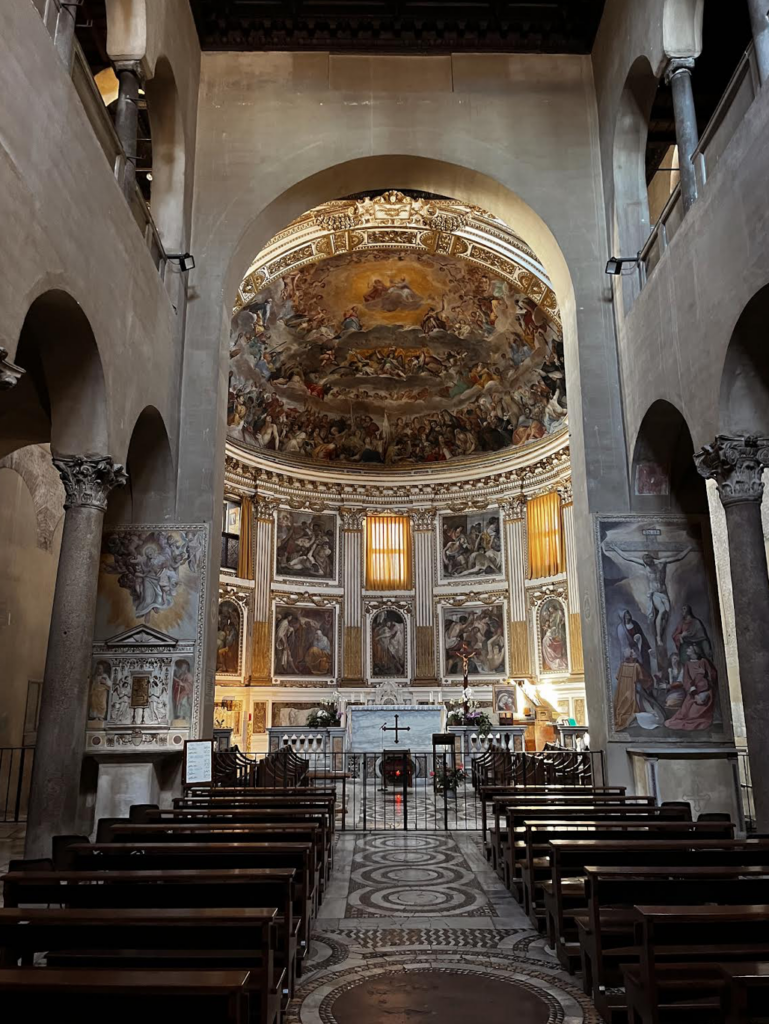
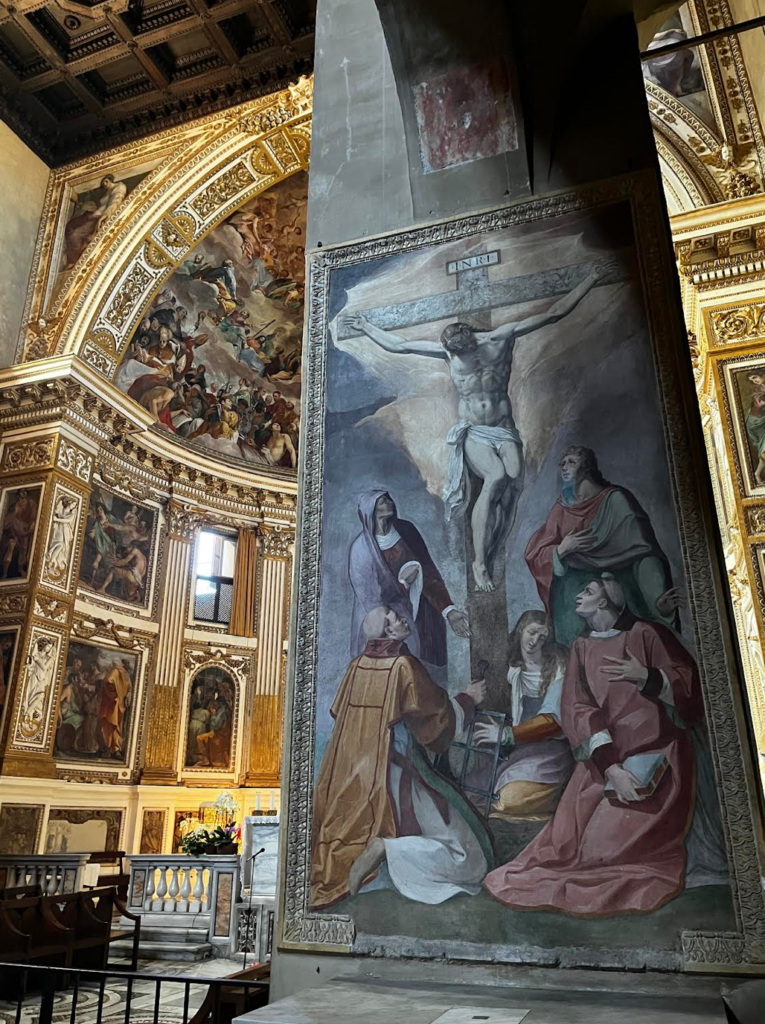
Built on a hilltop in Monti, the Basilica Dei Santi Quattro Coronati feels more like a medieval fortress than a church. Indeed, this was one of the most unique and special churches I visited while exploring Rome. There is an ancient and mystical atmosphere visiting this walled church .Translating from Italian as the church of the holy four crowned martyrs, this church has incredible fresco painted chapels and a cloistered garden.
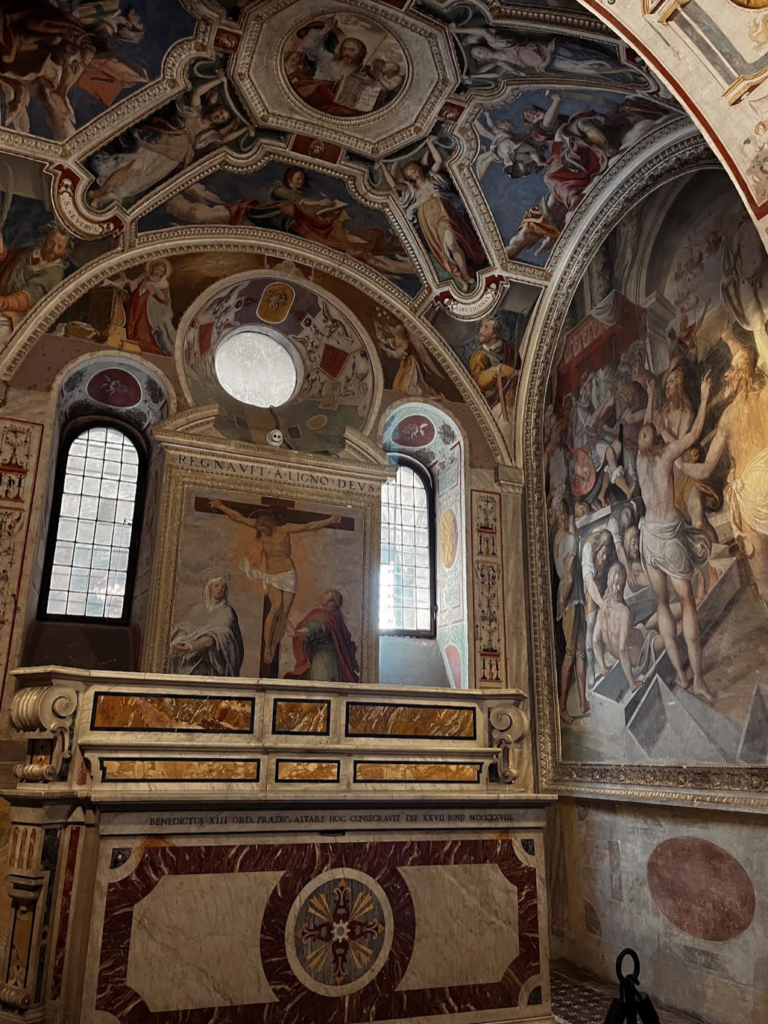
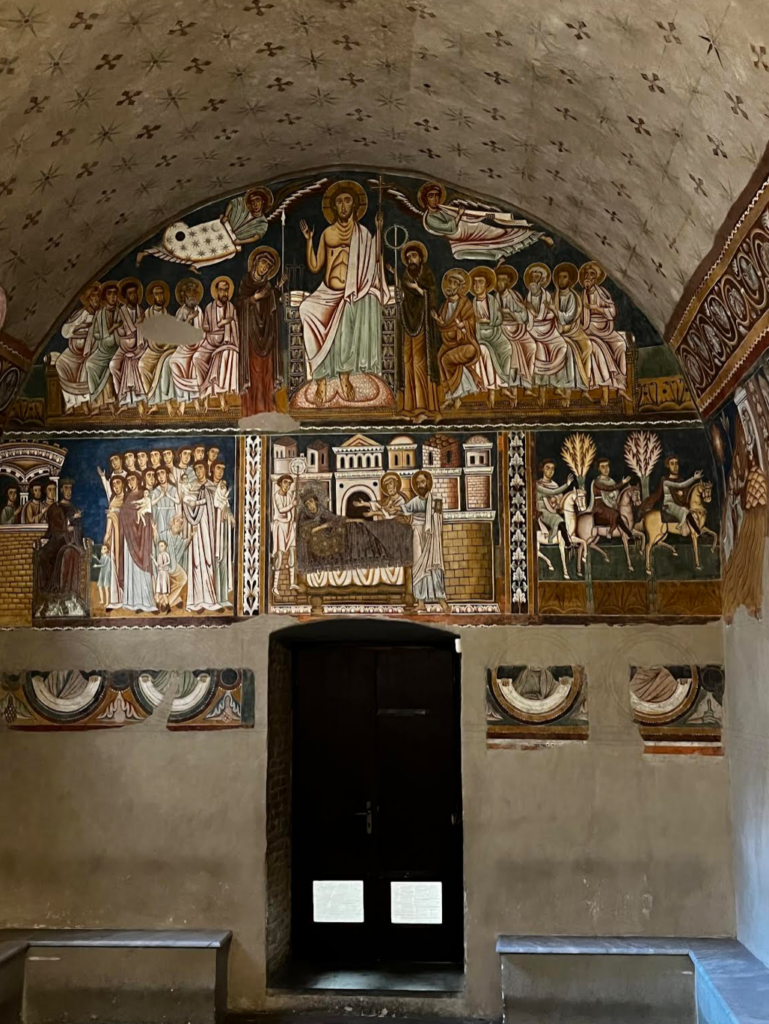
Basilica of St. John Lateran
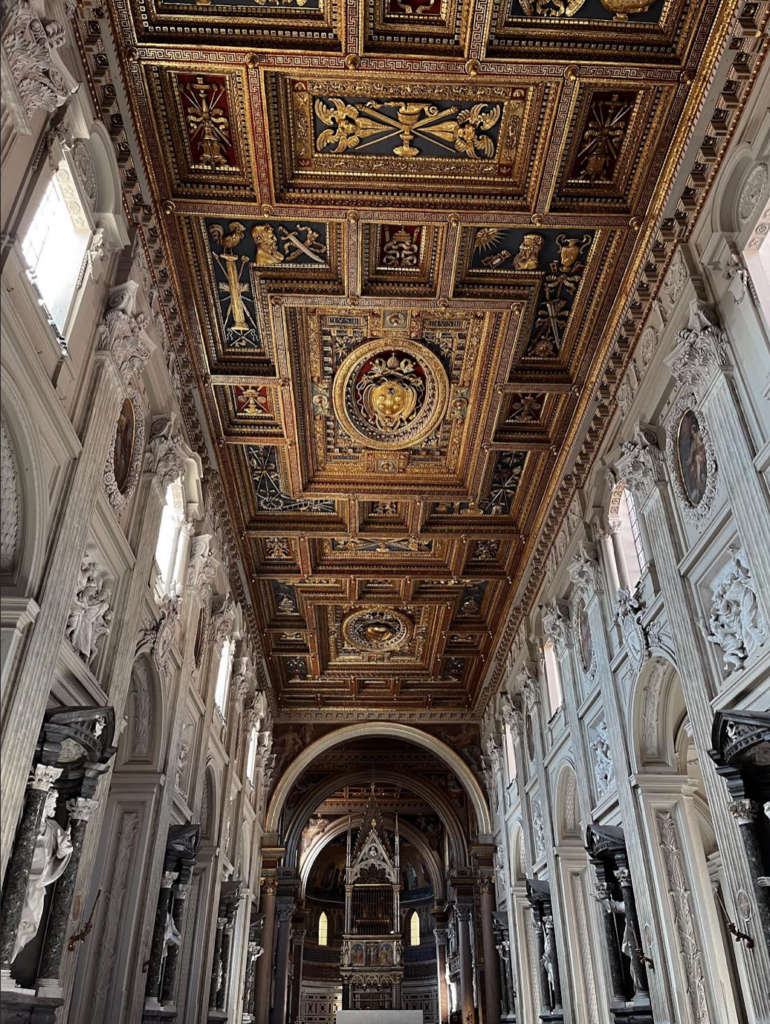

The Basilica church of St John Lateran is one of the four papal basilicas in Rome and is the head parish of the Roman Catholic church (despite the common misconception that it is St Peter’s Basilica in Vatican City). It is also the oldest church in Rome.
The church is truly majestic and no detail was spared. The main apse of the church was so white and so bright, it felt like I had arrived in the lobby of heaven with its marble columns and statues and its glistening golden-gilded sealing. Leave yourself plenty of time to appreciate this sanctuary, as the works of art are too numerous to count.
Scala Sancta
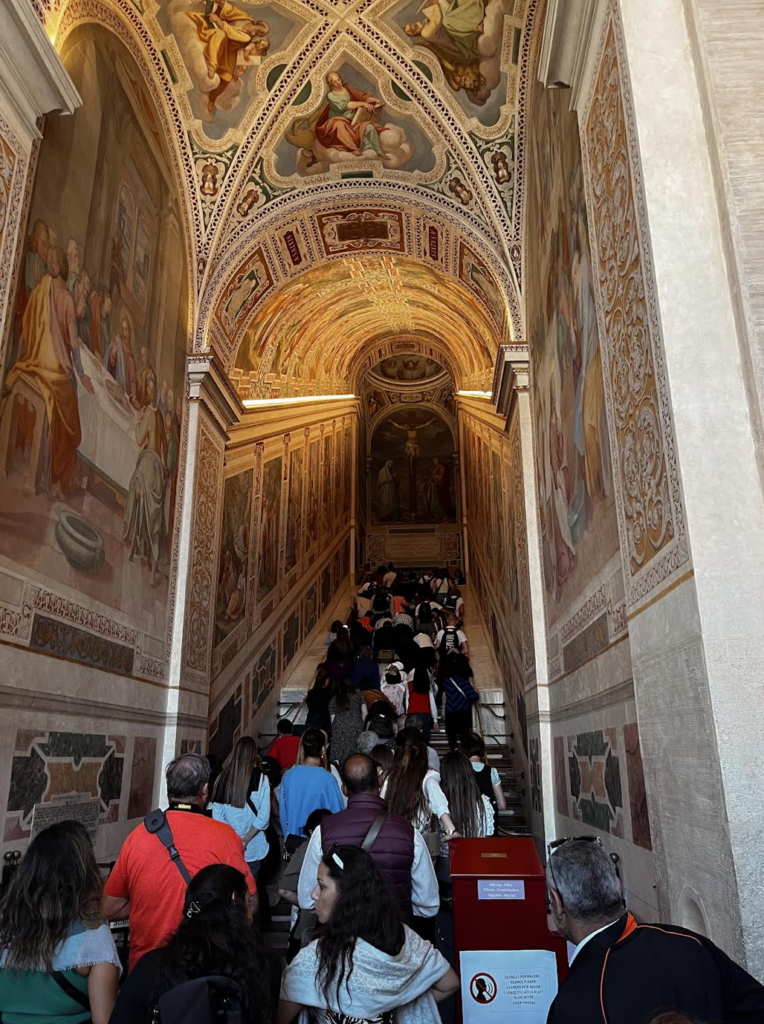
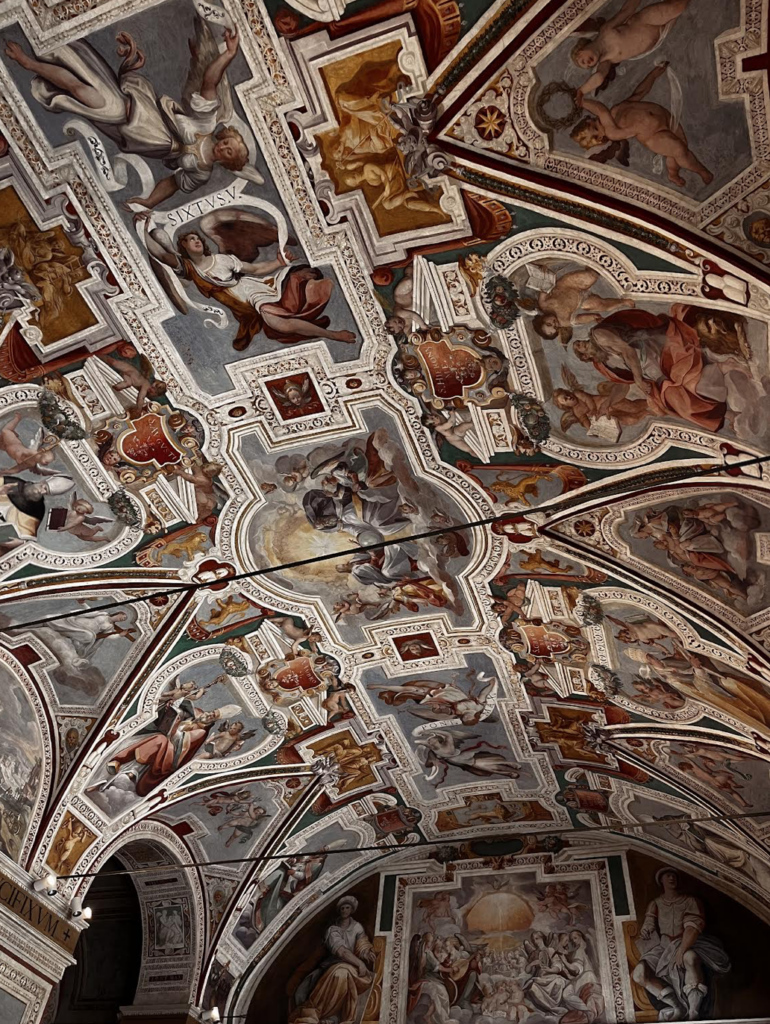
Right across the street from the Basilica of St John Lateran is the Scala Sancta, a set of holy stairs said to be brought from Jerusalem. The church is worth visiting to watch pilgrims climb the stairs on their knees while praying or reciting the rosary. This shrine has beautiful paintings as well.
Santa Maria in Cosmedin
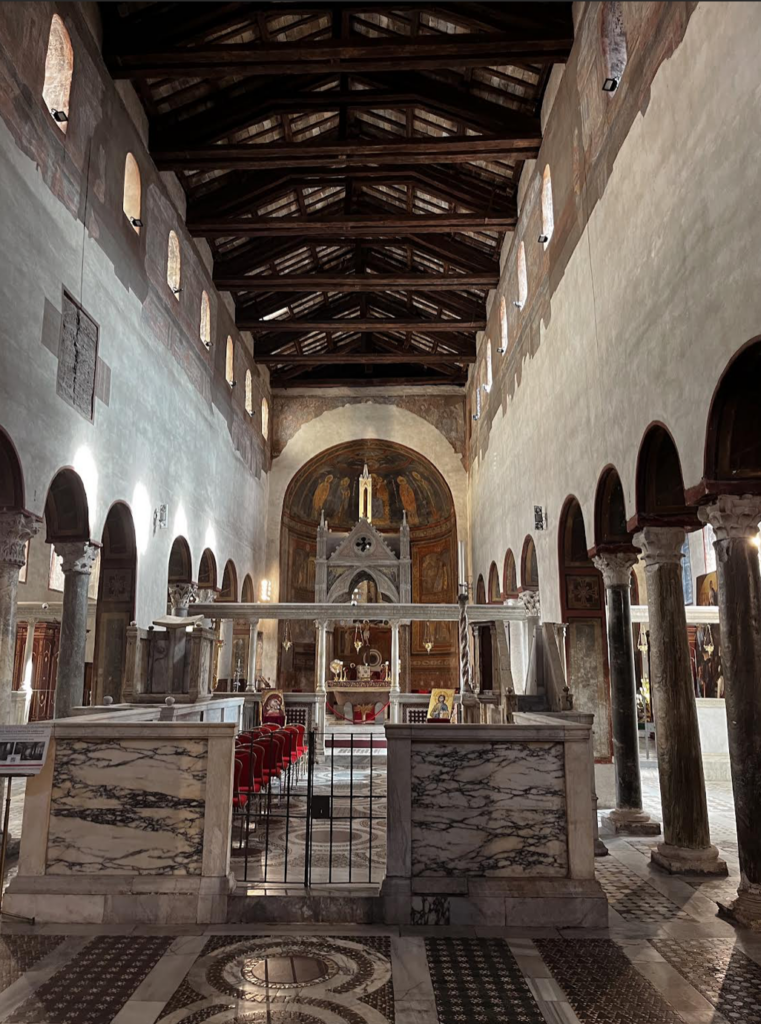
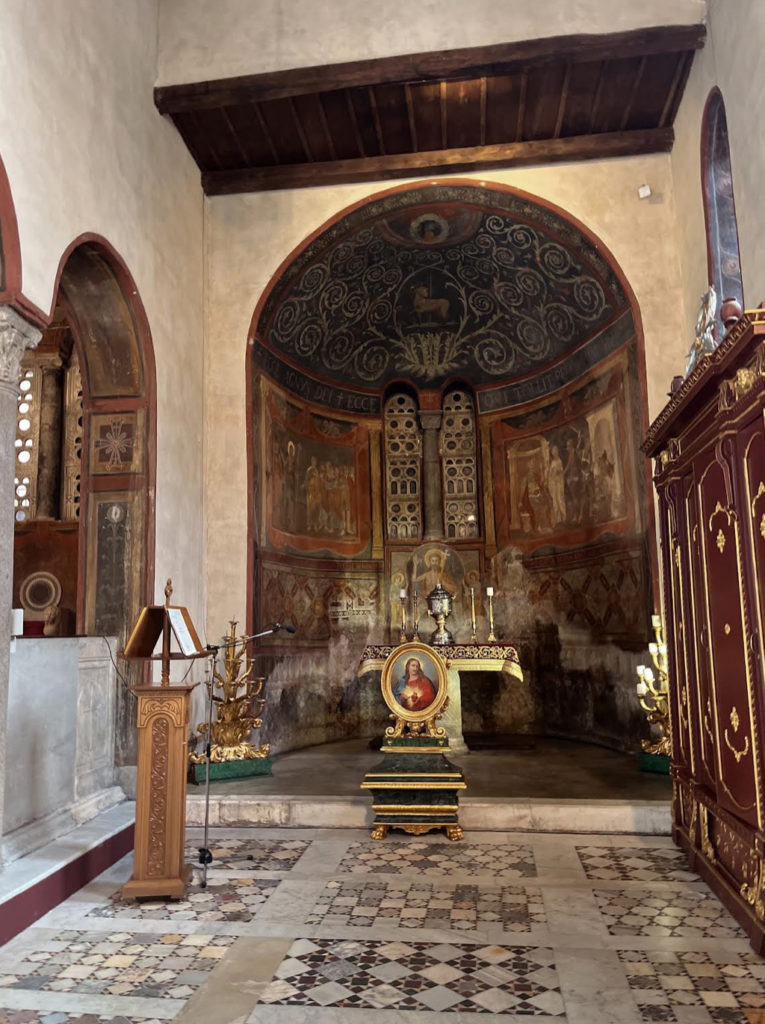
The church of Santa Maria Cosmedin is an ancient church with a unique character. While many of the churches in Rome maintain a Renaissance or Baroque influence, the original architectural and artistic styles have been retained in Santa Maria Cosmedin. It also served as the Melkite or Greek Catholic place of worship for immigrants from many parts of the Greek speaking world.
Day 3: Vatican City
On the opposite side of the Tiber river, across from the Centro Storico is Vatican City. Vatican City is actually a sovereign state and country, within the city of Rome. This autonomous religious nation is no larger than 100 acres and has around 1,000 permanent residents. Additionally, Vatican City has its own laws and passports. It’s the smallest country on earth. Many people include Vatican City as part of Rome since it engulfs the nation and is integral to the cultural, historical, and religious significance of the city.
Castle Sant’ Angelo
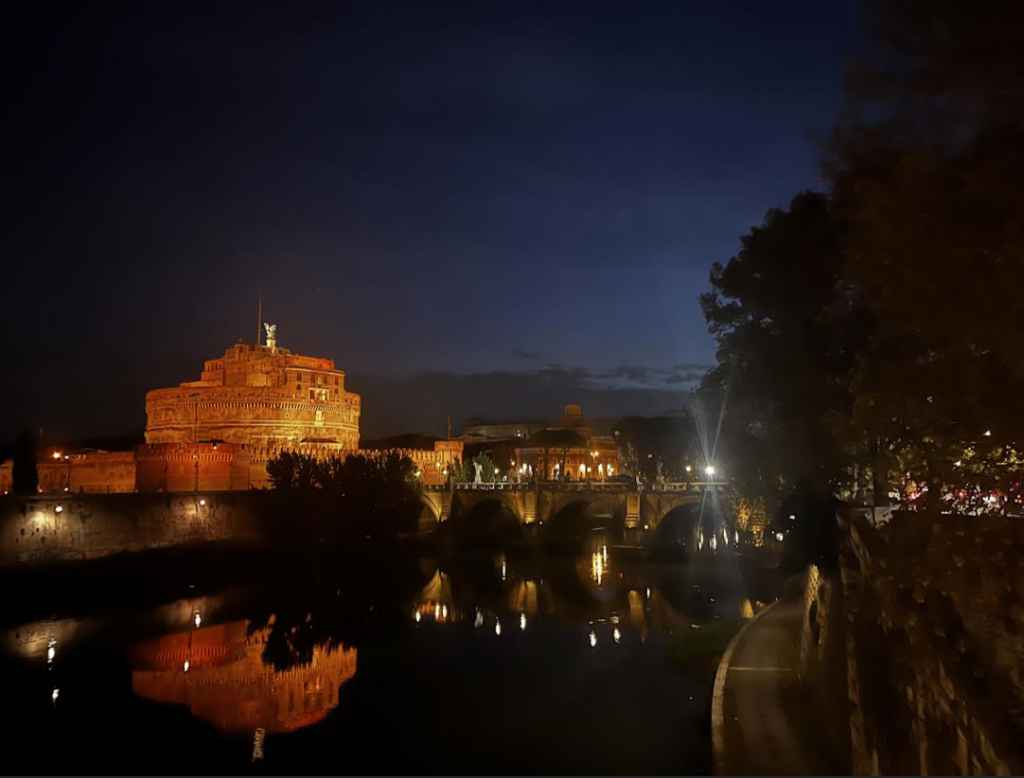
I started my day shortly before sunrise to enjoy a walk to Vatican City in the early hours of the morning. Along the way, I came across the Castle Sant’ Angelo, lit up in a soft orange light. The bridge leading to the castle is guarded by guardian angels. There is a secret path from within the Vatican that the pope could use during times of danger. It was used several times as the popes escape route. You can also visit inside Castle Sant’ Angelo if you come back later in the day.


From there, I headed to St Peter’s Basilica to see it illuminated and with less crowds.
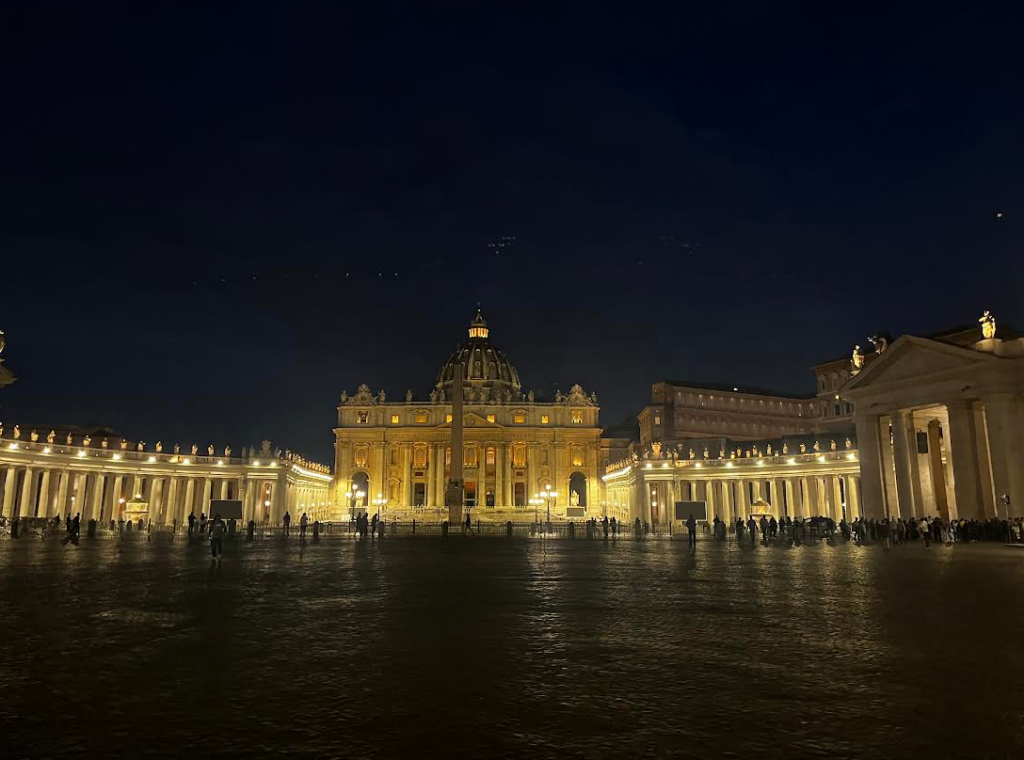
Vatican City Museums


Next, I began heading to the Vatican Museums. This is one of the top things you should pre plan before exploring Rome. The Vatican Museum is one of the most visited places in the entire city. The museums house ancient treasures and renaissance masterpieces. It has one of the top collections of art from antiquity to modern times.
Allot 3 Hours to Visit all of the Vatican Museum
Despite what you read on the internet, it is totally possible to visit the entirety of the Vatican Museum in less than 3 hours. There are just over 20 galleries but they are all interconnected with one museum leading into the next.
I would highly recommend a self guided audio tour as the tour guide groups seemed quite large and distracting. One of the things about the Vatican museums is that each person has specific interest and tastes. You will want flexibility to appreciate the art that you find most appealing.
// I booked my tickets with Headout. The representatives escorted us directly to the museum entrance and past the 2 hour line of people waiting to purchase their entrance ticket. From there, they scanned our tickets for us and we where free to roam about the Vatican Museums on our own.
Sistine Chapel
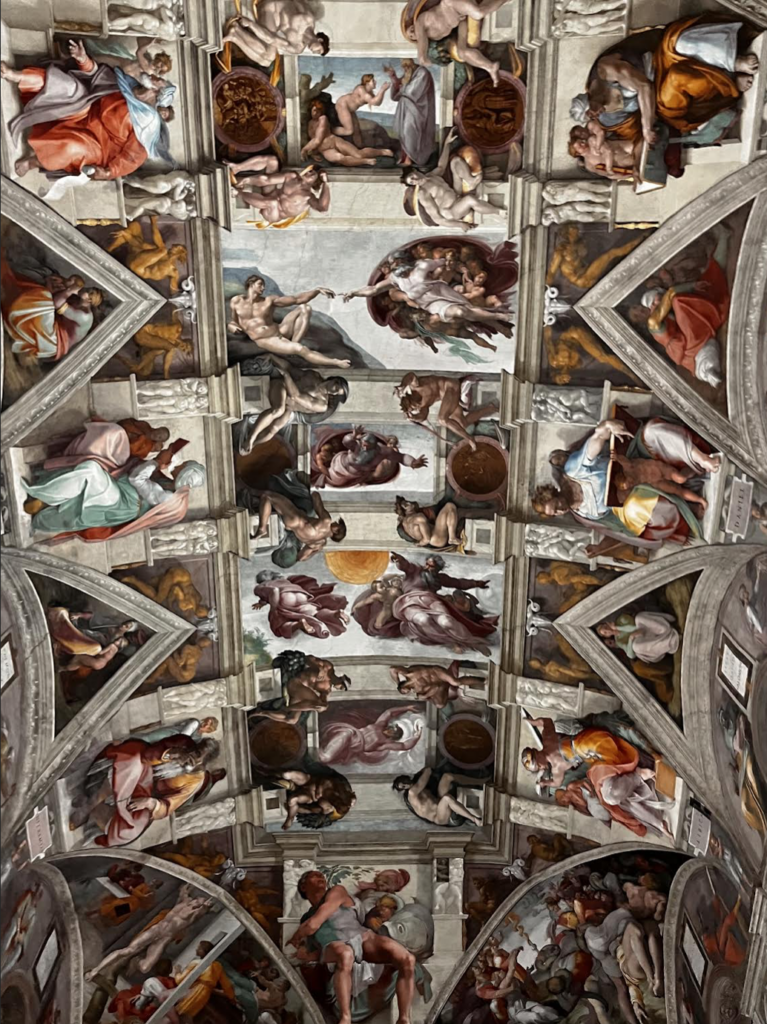
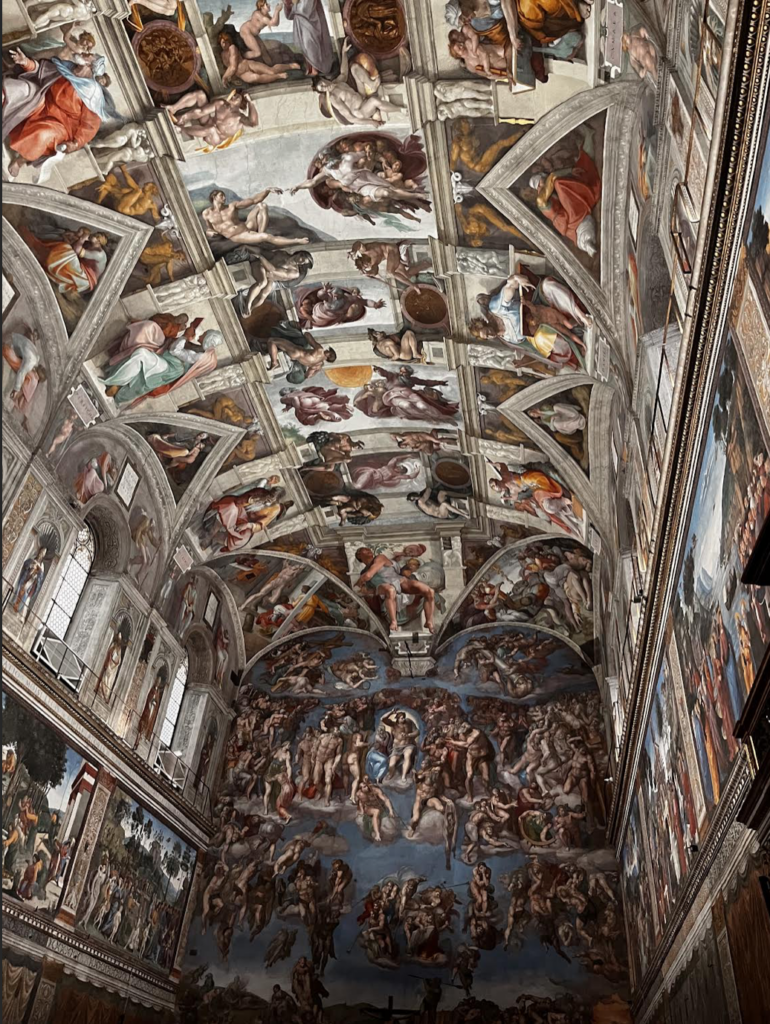
It would be impossible to visit the Vatican Museums without visiting the Sistine Chapel. The Sistine Chapel was painted in the early 16th century by Michelangelo. Although it’s not a very large space, the Sistine Chapel is one of the most beautiful rooms you will ever enter. The Sistine Chapel is cherished for its intense attention to detail, rich colors, and biblical imagery.
Story of Creation – Painted in Vivid Fresco
The ceiling has the famous image of God the Father touching the hand of Adam and conceiving man into creation. The wall above the alter depicts the last judgment and was the topic of scandal due to the way Jesus and the Virgin Mary were portrayed without halos and skin exposed, a dramatic brake from previous Catholic tradition. It should be noted that photography is not allowed in the Sistine Chapel (however, everyone takes at least a couple pictures).
St. Peter’s Basilica
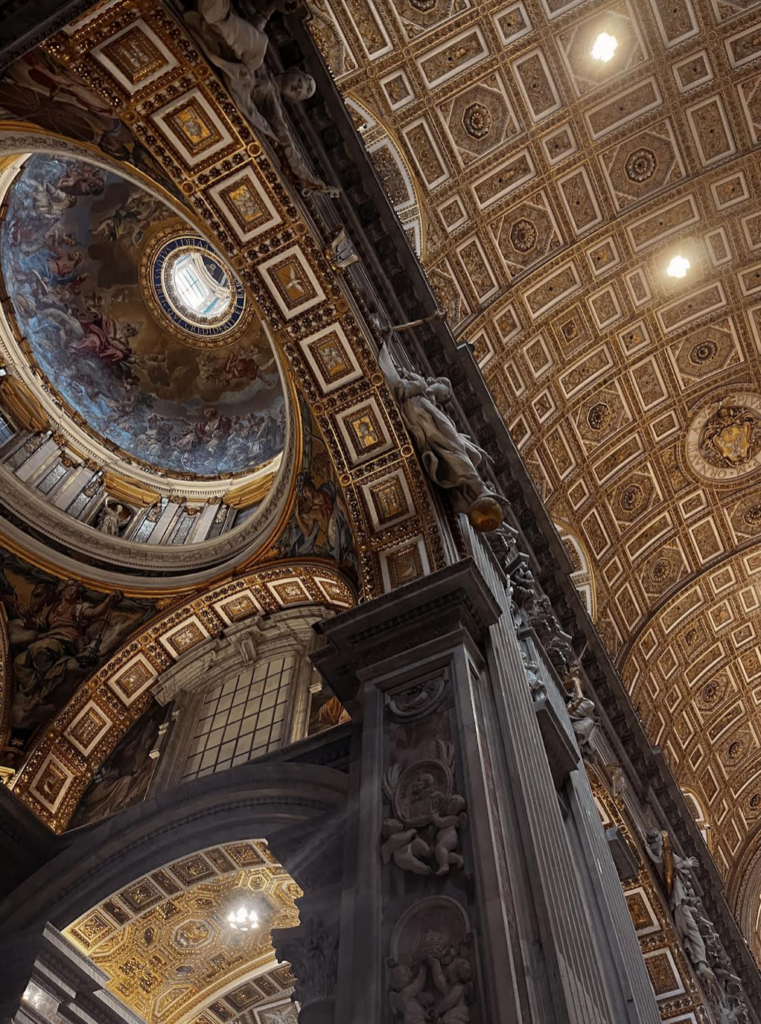
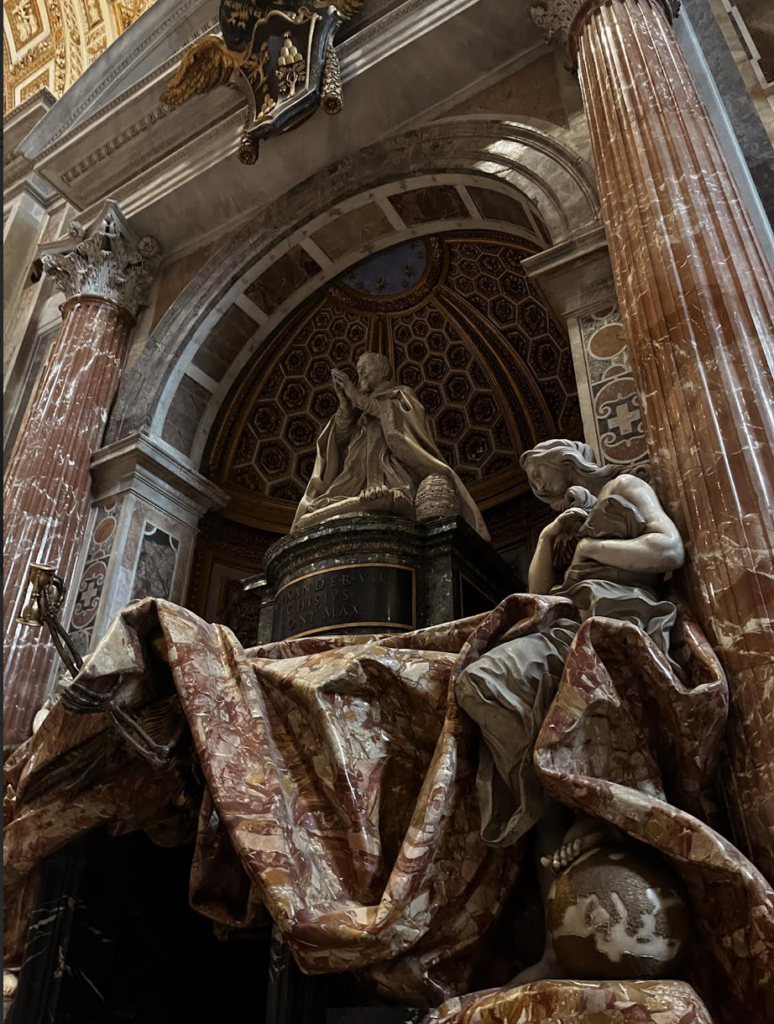
Next I headed back to St Peter’s Basilica. The basilica sits in a square flanked with columns and statues of the saints and adorned in the middle with an obelisk brought from Egypt. Don’t get discouraged by the line in front of St. Peter’s as it moves quickly. It only took me 30 minutes to enter in October.
St Peter’s basilica is one of the largest church in the world. It is adorned with gold from the ceiling to the floor. The church really feels quite colossal and extravagant. Furthermore, much of the funding to rebuild the new church over the previous ancient structure was funded by indulgences.
Make sure to marvel at the Vatican’s remarkable dome which is the largest in the world. Also extraordinary is Peter’s Baldachin; the bronze, spiral columned, canopy over the alter and tomb of St. Peter. Additionally, make sure you leave enough time to visit the crypt below the basilica where the popes are buried.
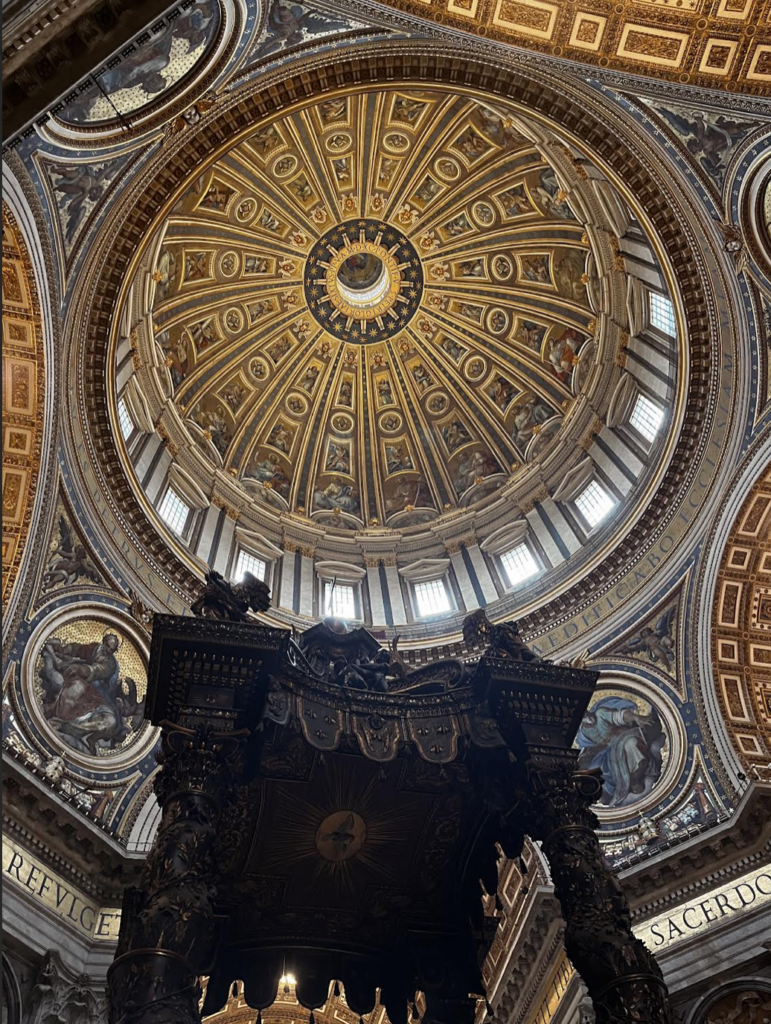
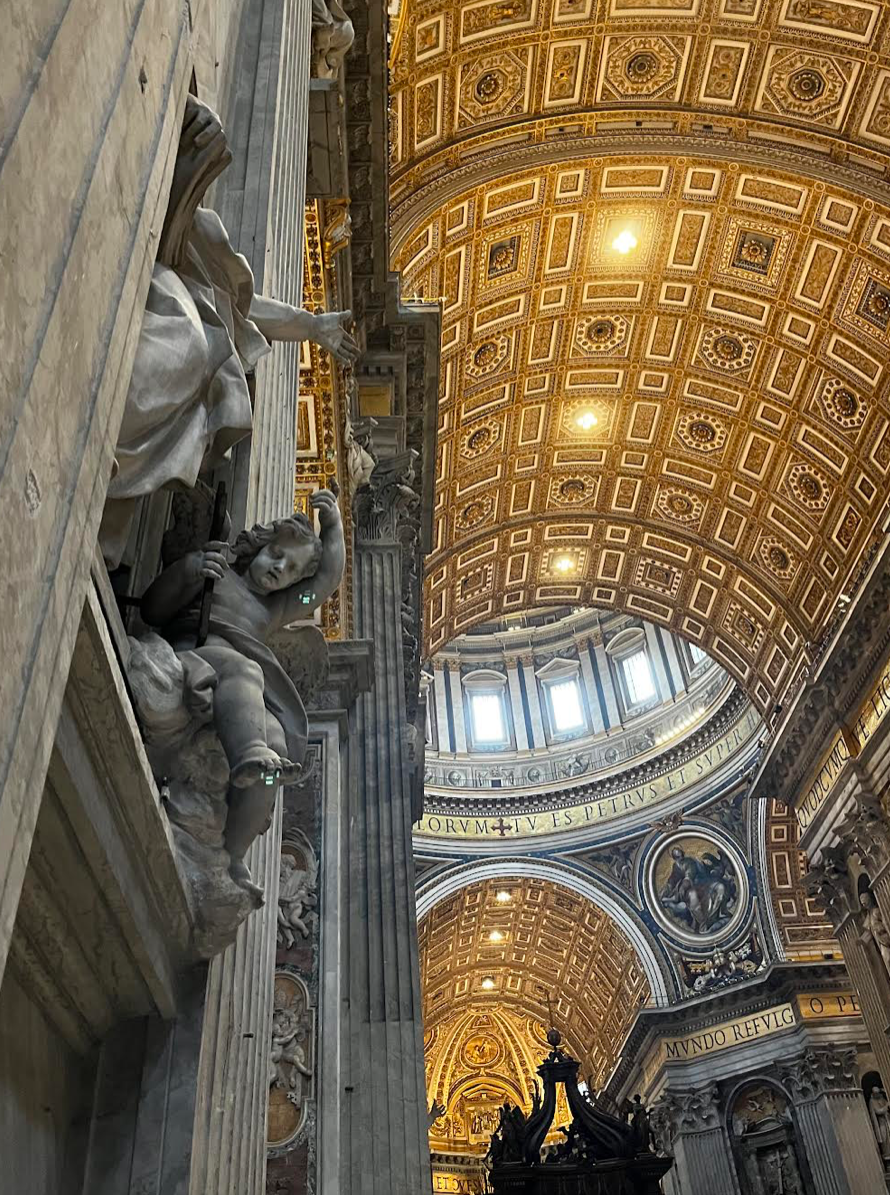
Meet the pope on Wednesdays
Note: Unless you specifically want to see the pope and attend the papal audience (where the pope blesses the crowd and drives around in the pope mobile), avoid visiting the Vatican on Wednesday as it is significantly busier with religious pilgrims.
Day 4: Trevi Fountain, Spanish Steps, Ecstasy of St. Theresa, and Basilica of St. Mary Major
Trevi Fountain
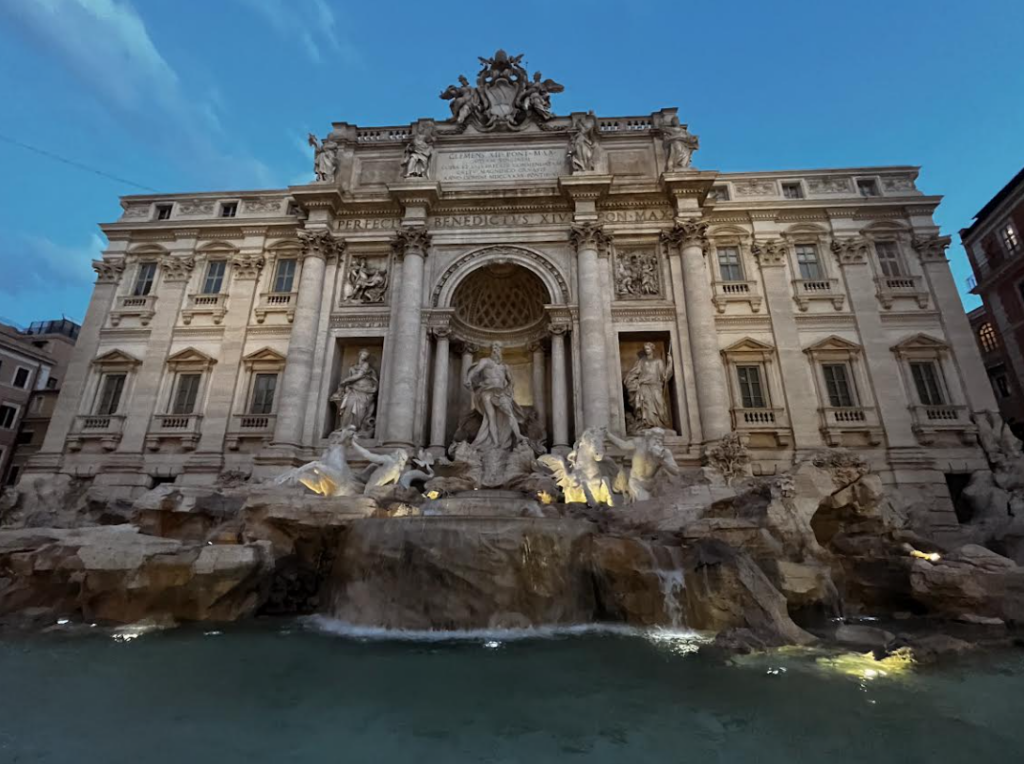
I started my day early again before the sunrise again to see one of the most iconic symbols of the city, the Trevi Fountain. As the sun began to greet the eternal city, I was one of the few tourists at the dream-like baroque fountain. It was amazing to experience this gorgeous space in the quiet hours of the morning and listening to the peaceful sound of the waters. The Trevi Fountain combines both history and mythology and is once of the most unique and impressive fountains in the city. It is good luck to throw a coin over your shoulder into the Trevi Fountain.
the Spanish Steps
Another one of the most legendary landmarks in Rome is the Spanish Steps. Funded by a French diplomat to honor the French community in the city, the Spanish steps include over 135 stairs with multiple turns. The Stairs connect the Trinità dei Monti Church with the Piazza di Spagna, a square associated with Spanish Influence. Together, the Spanish steps represent the political ties of France and Spain in the 18th century along with the grandeur of Baroque architecture.
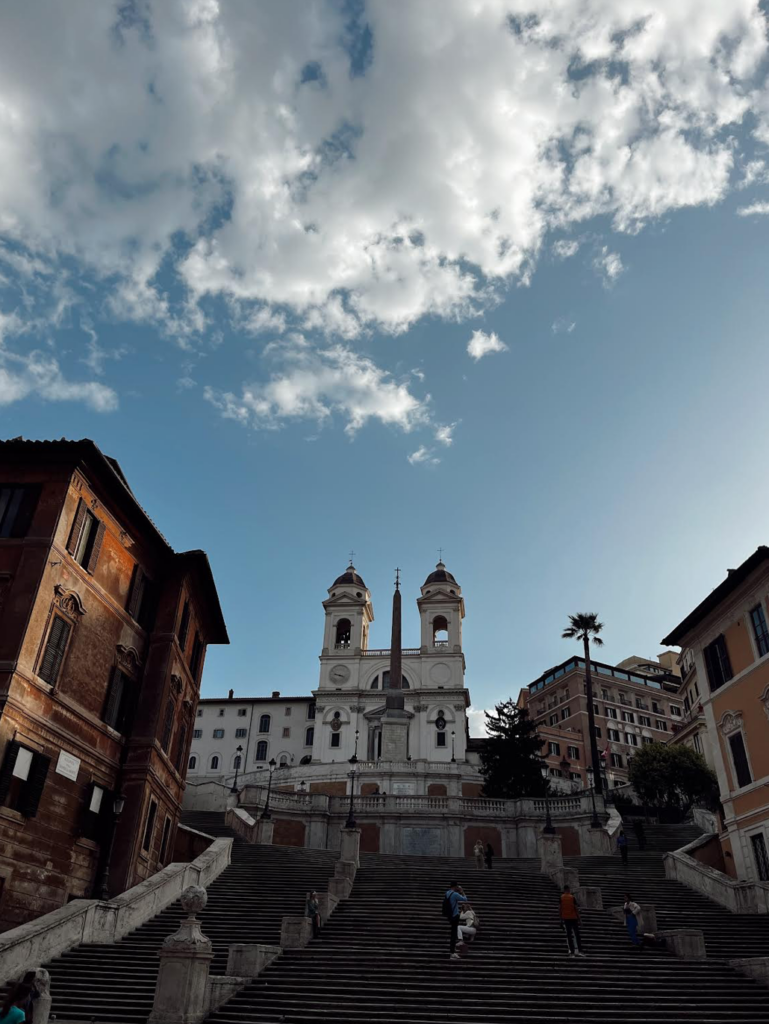

Visiting the Spanish steps early will allow you to experience the grandeur of this architectural gem without the hordes of tourists. It is not allowed to sit on the Spanish Steps and you can face a fine up to €250. There is a small but ornate Catholic Church, adorned with an Egyptian obelisk atop the stairs.
Stroll Around the Villa Borghese
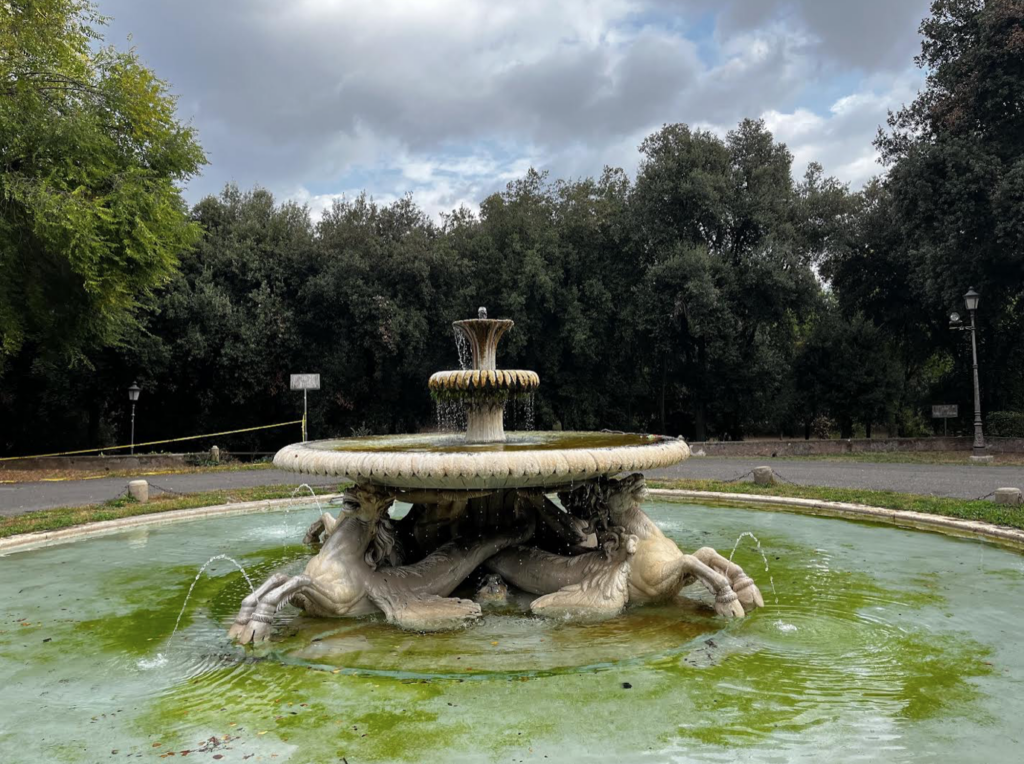
Established by a 17th century cardinal, the Villa Borghese was designed to be a large, lush green space for meeting and entertainment. The Villa Borghese is a fantastic place to get away and soak up some nature if you need a break from exploring Rome. Becoming a park in 1903, there are many places for an enjoyable walk.
The Ecstasy of St Theresa
After a leisurely stroll through the Villa Borghese, I made my way to the church of Santa Maria Della Vittoria. With a slender but charming baroque facade, the church may seem like any of the other nearly 1,000 parish churches in Rome. But inside a chapel on the left is one of the most remarkable sculptures in all of Italy.
The Ecstasy of St. Theresa was crafted by Bernini to portray the saint’s spiritual encounter. An angel pierces the heart of St. Theresa of Avila’s heart with a golden arrow. The arrow symbolises both pain and spiritual ecstasy, representing her deep spiritual union with God. The sculpture is framed by flowering Corinthian columns, adding to the drama. The Ecstasy of St. Theresa also represents the Catholic Church’s response to Protestant Reformation to commission even more extravagant artwork. It serves as a reminder to the importance religious politics that preoccupied Rome and Europe during this time.
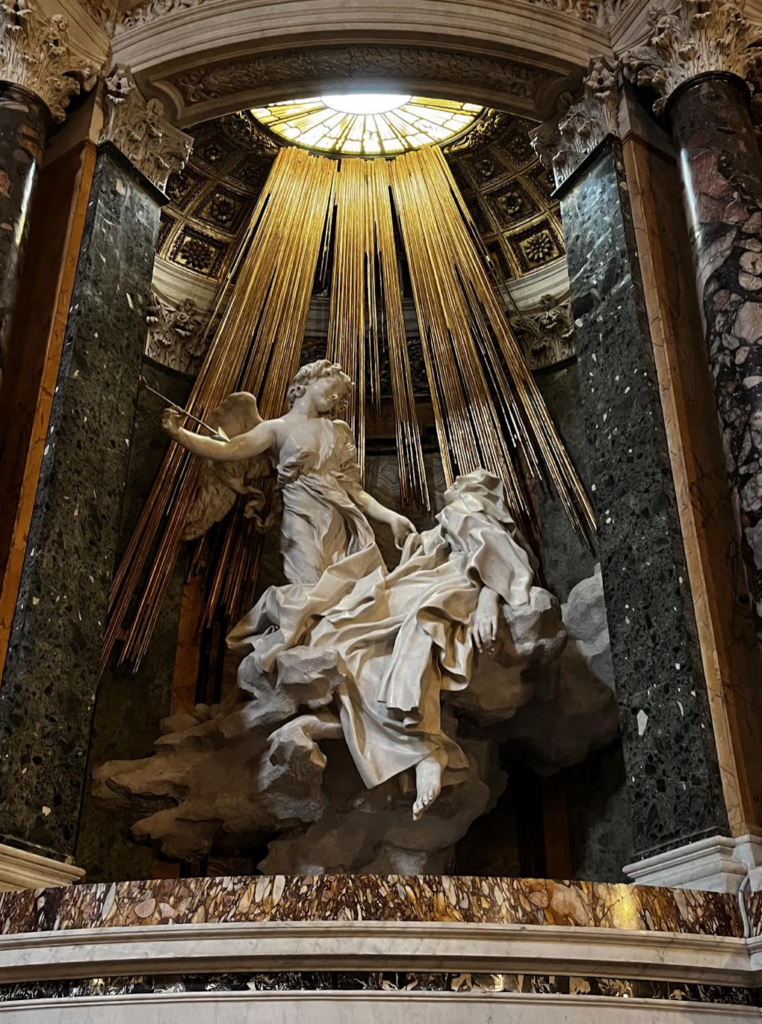

Basilica of St. Mary Major
Located on the Esquiline Hill near the Roma Termini Station, the Basilica of St. Mary Major is one of the four papal basilicas in the city. It is a massive building and the largest house of worship dedicated to the Virgin Mary in the city. It has extraordinary religious, architectural, and historical significance. One of the most impressive works of art is the mosaic of Christ crowning the Virgin Mary as the queen of heaven. Also, there are many ornate chapels including the baptistry.
Baths of Caracalla
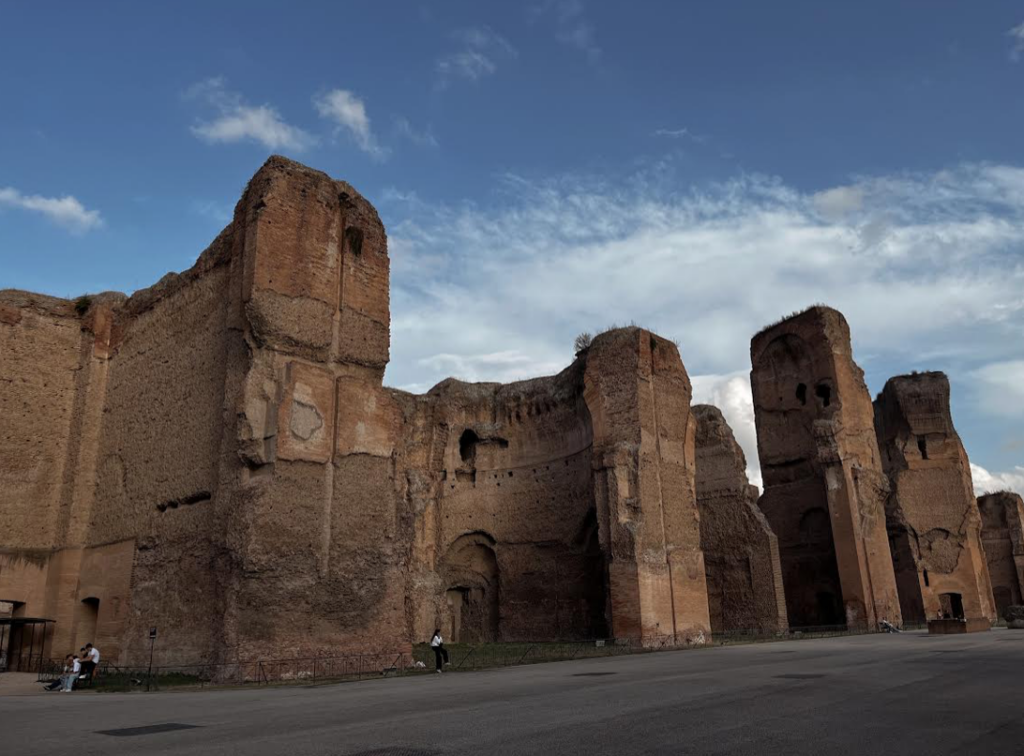
In the afternoon, head to the Baths of Caracalla. The ruins are some of the largest and best- preserved ancient Roman baths in the world. The Baths of Caracalla where a massive effort from the emperor to gain more popularity among the city’s population. It was able to accommodate up to 1,600 people at once.
The Baths of Caracalla are a lesser visited archaeological site when exploring Rome. The only other visitors where a group of Italian high schoolers. Wandering through the towering walls of the Bath made me reflect at the sophistication and ingenuity of Roman society.
Day Trips from Rome
Because of Rome’s central location and the exceptional network of high speed bullet trains, taking day trips are very easy to plan. Bullet trains leave Rome as early as 5 a.m. daily.
Some of the best city to take day trips to include Venice, Florence, Milan, and Naples. Taking day trips by train was a great option for me to base myself in the eternal city but see different corners of the country on my first trip to Italy.
Thanks for reading my blog. I hope you enjoy Rome as much as I did. If you have any questions, feel free to comment below!

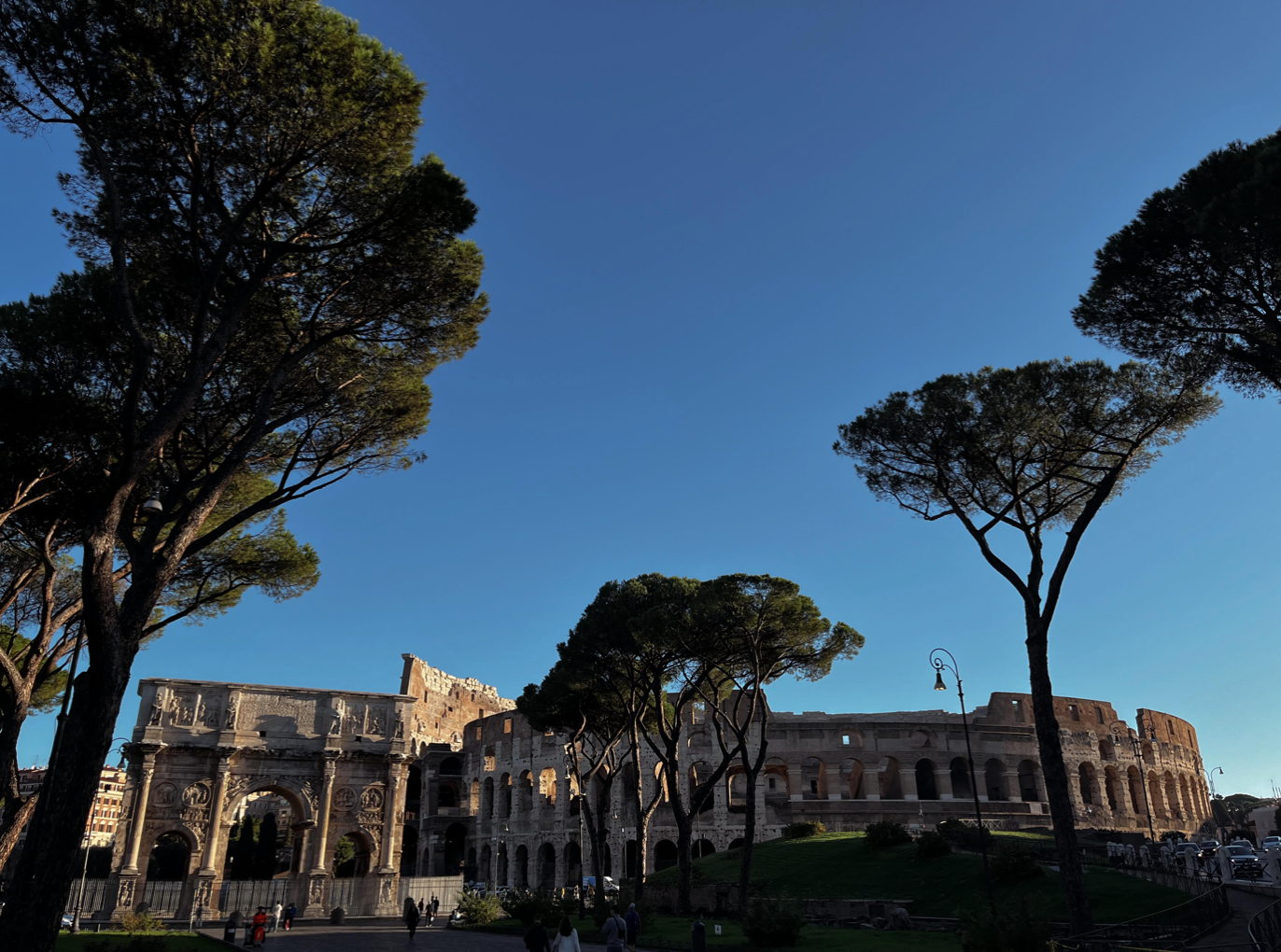
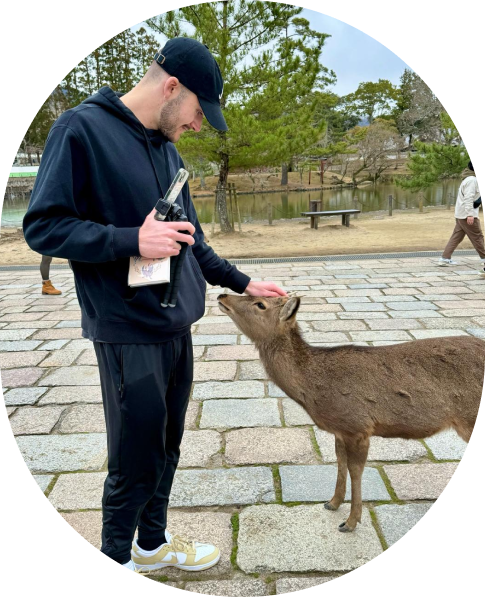
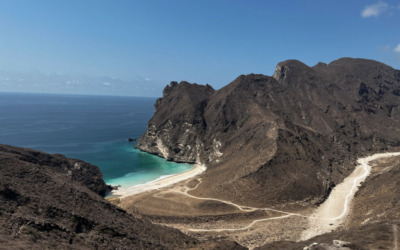
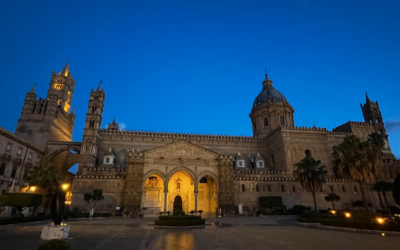
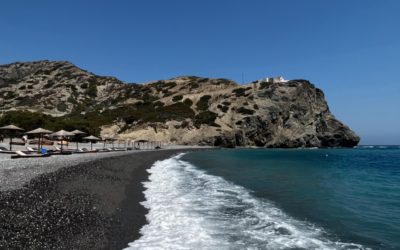
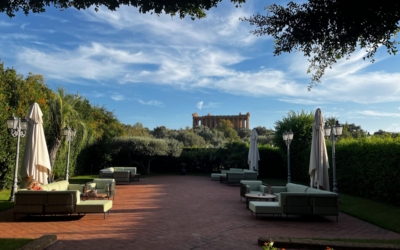

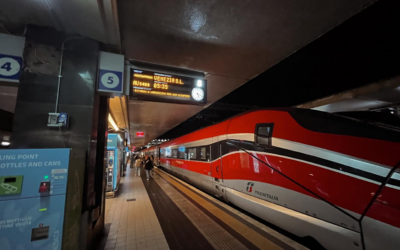

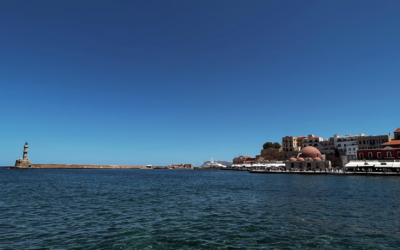

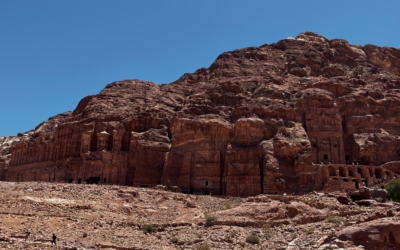
0 Comments